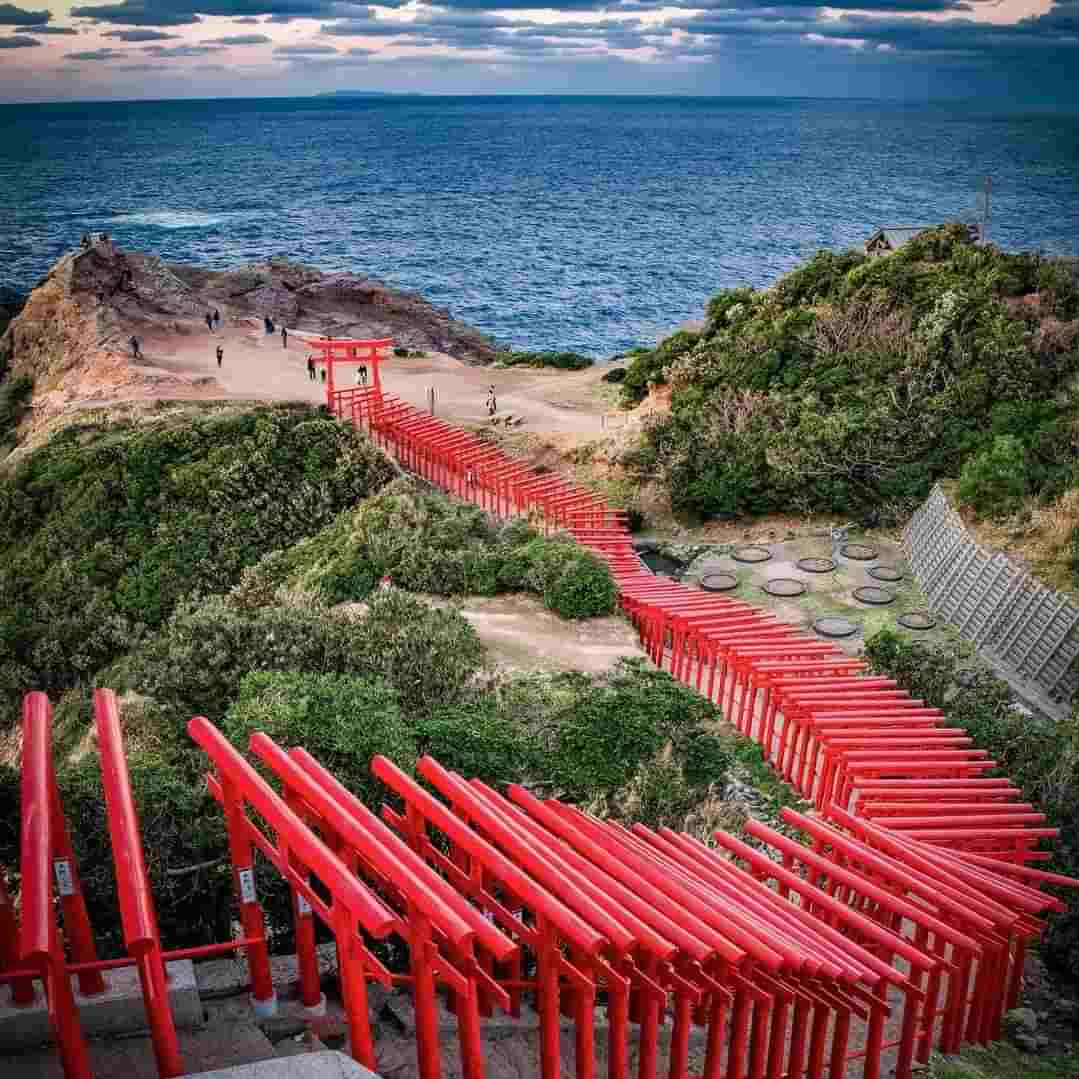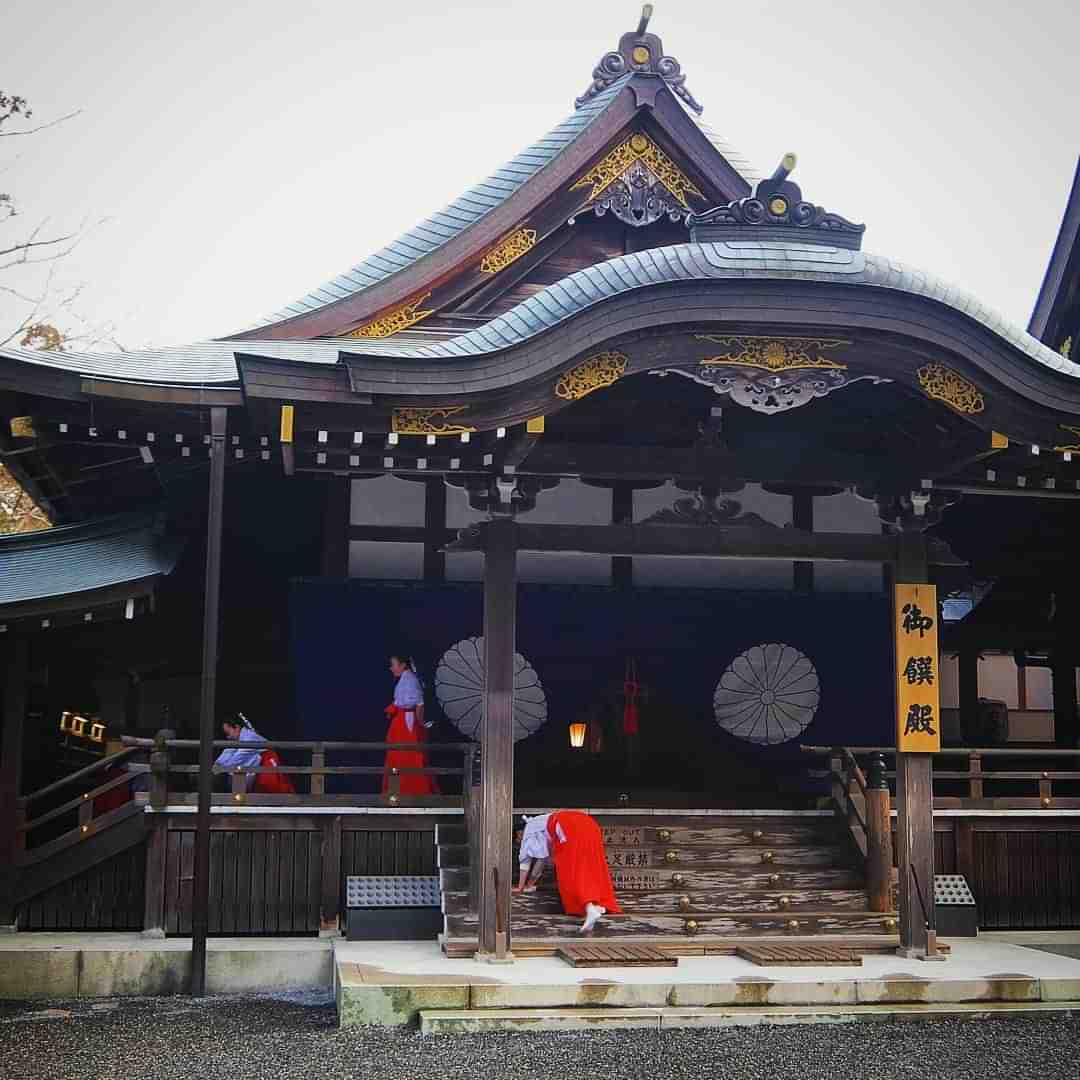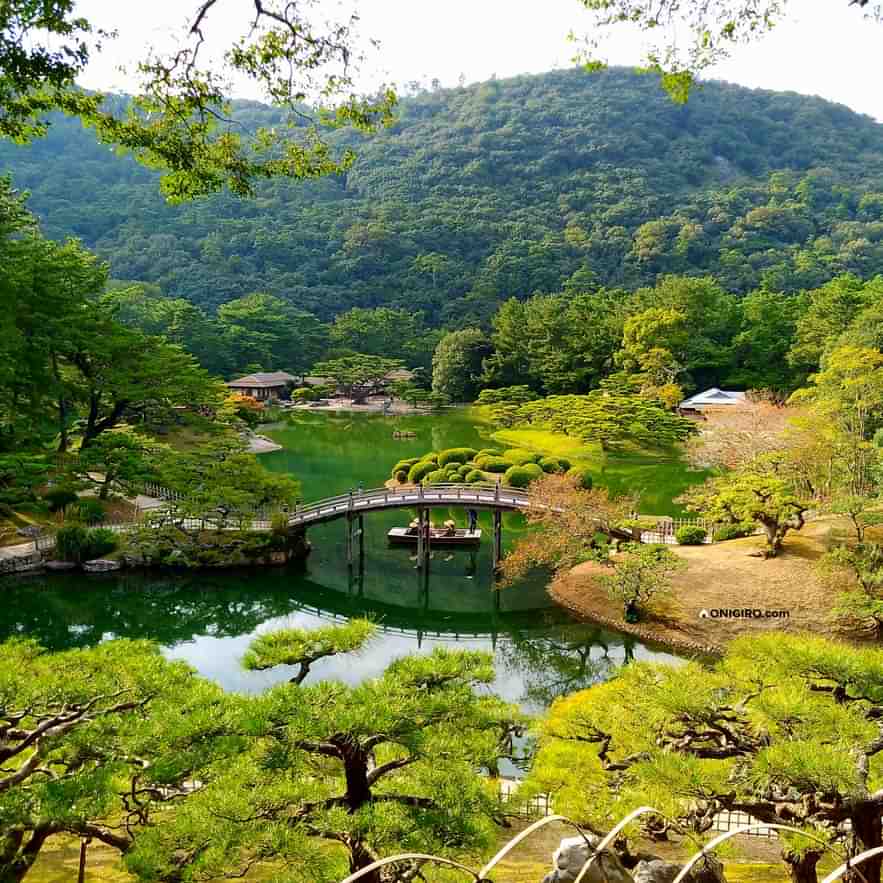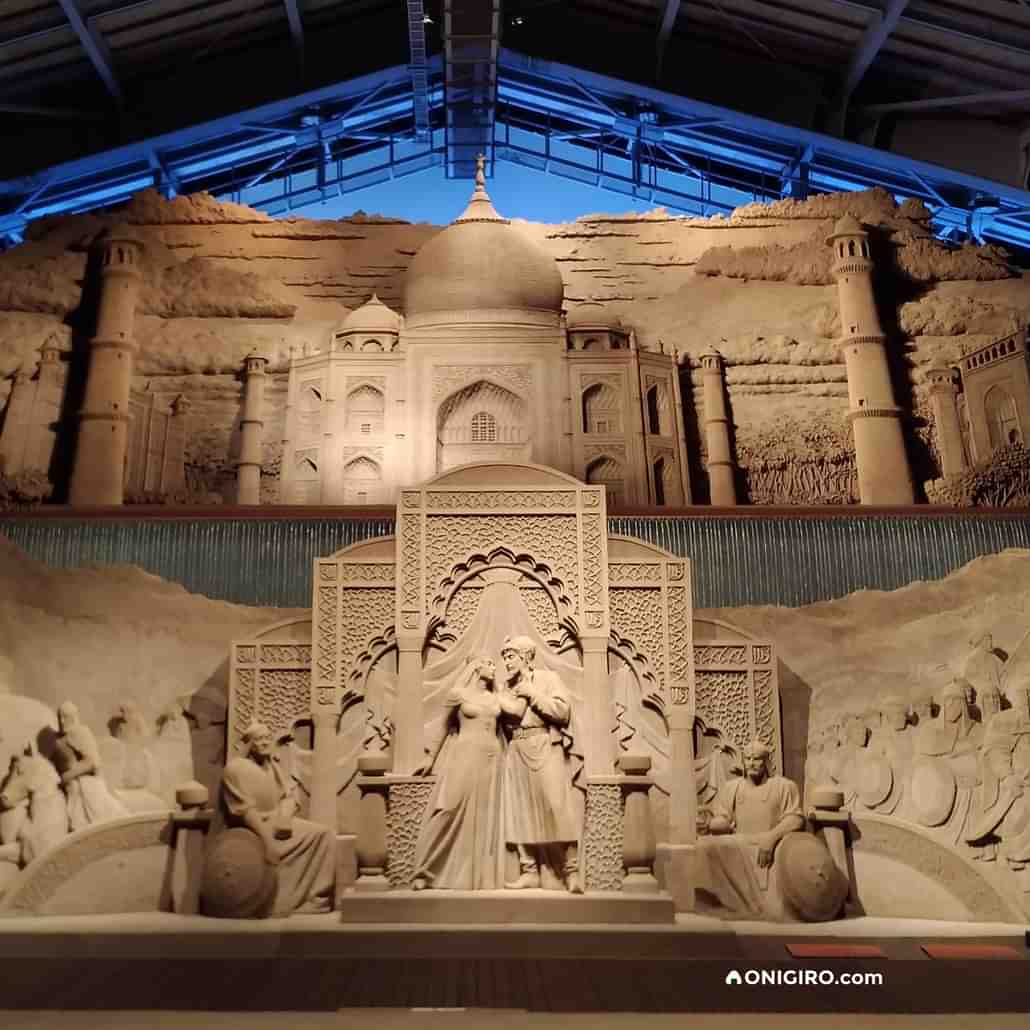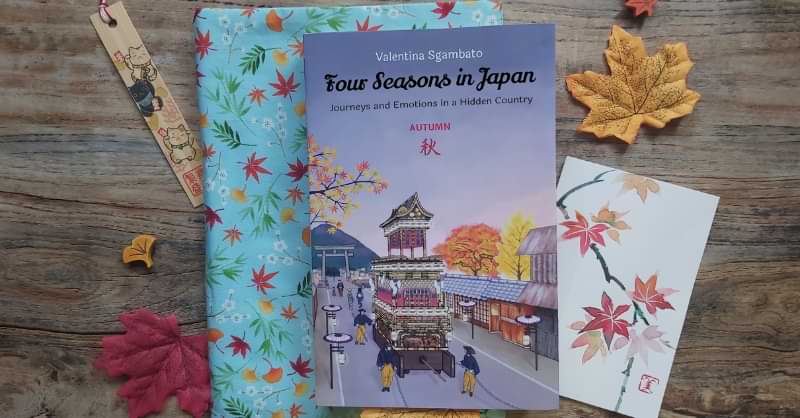Kyōto prefecture & city guide
Kyōto, the city where you can live the authentic Japanese culture
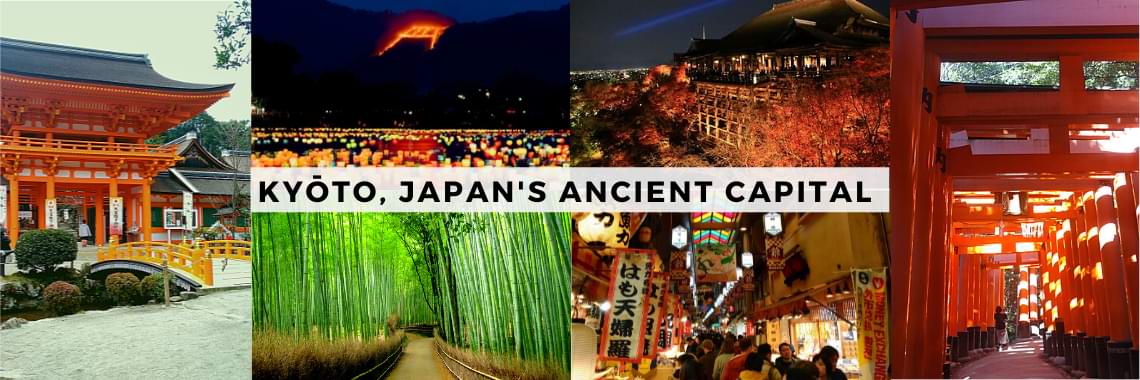
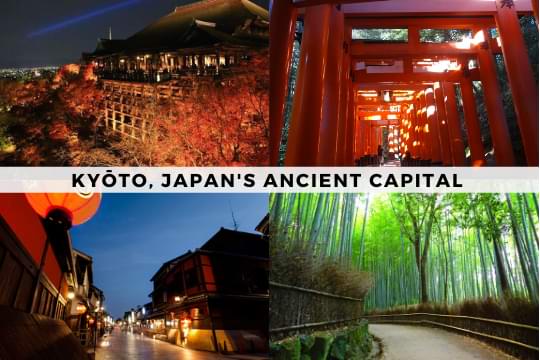
Here’s our favorite times of the year to visit Kyōto city and prefecture, while at the end of the page you’ll find an original itinerary to explore the city:
- On the last day of the Obon celebrations, the Gozan Okuribi is held, also known by the name of Daimonji, during which large braziers are lit on the mountains surrounding the city of Kyōto to compose 6 huge kanji, kanji that guide the spirits of the ancestors to return to their world;
- On recurring monthly dates (see below for details) Kyōto holds very characteristic second-hand markets where you can buy traditional and well-priced souvenirs;
- Assisting to the best 3 festivals of Kyōto (Aoi, Gion & Jidai Matsuri) is a blast from the past, with hundreds of people parading with old costumes.
Festival & events in Kyōto
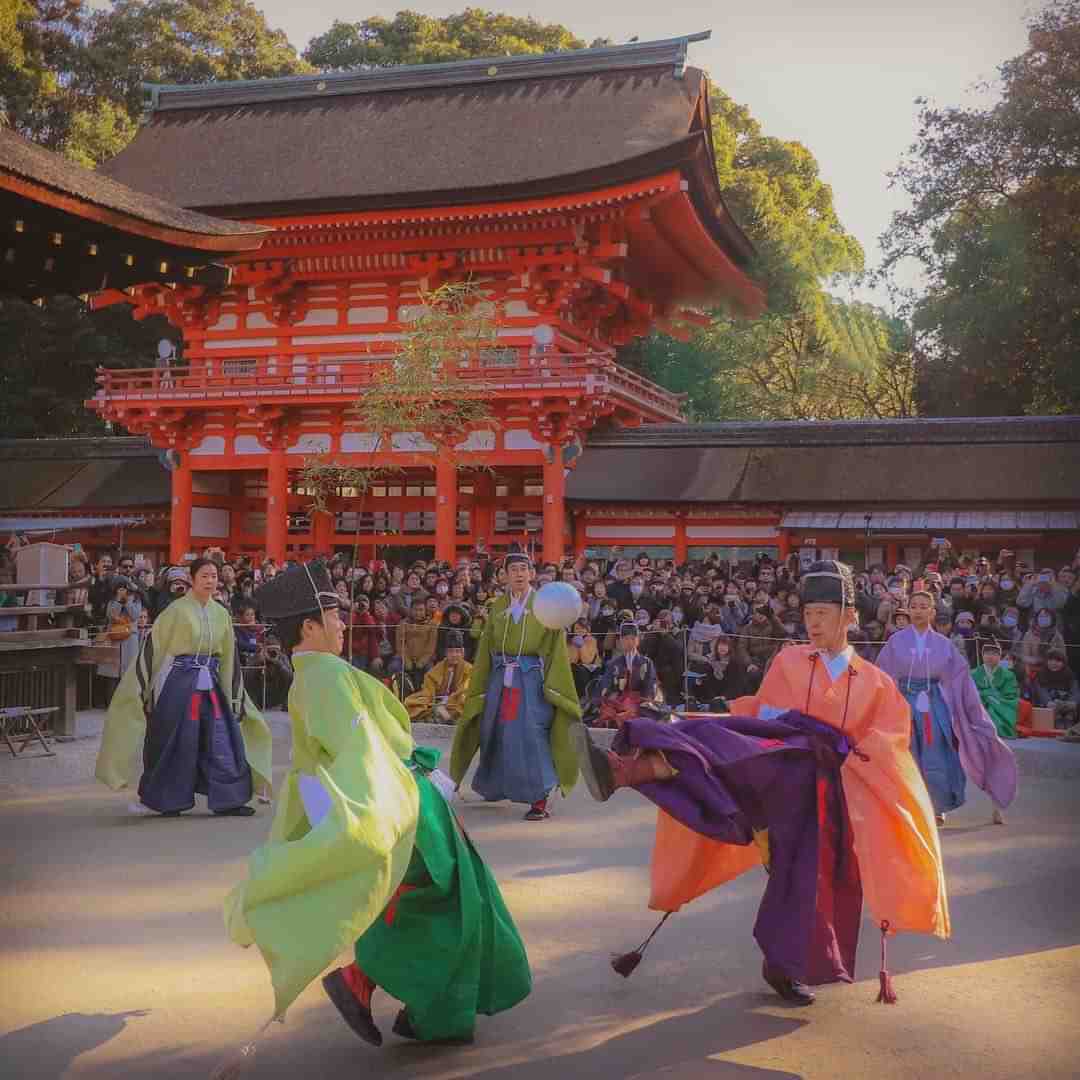
Kemari Hajime
蹴鞠はじめ
When: 4 of January, all years same day
Where: Shimogamo-jinja Shrine
Kemari is a traditional performing art consisting on Shinto priests kicking a leather ball so as not to drop it on the ground.
The event takes place at 13:30 on a 15 square meters area with a cherry tree, a pine tree, a maple and a willow tree planted at the corners.
Visit the official website to know more on shrine's festivals.
Pic © mr.m_kyoto
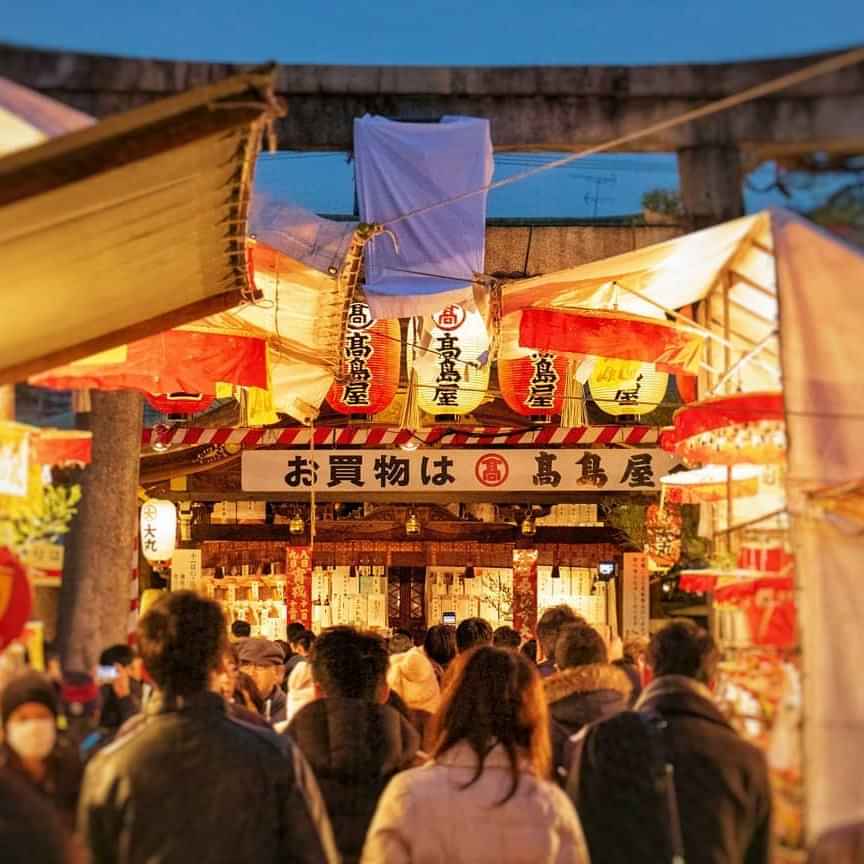
Tōka Ebisu Taisai
十日ゑびす大祭
When: 8~12 January, all years same days
Where: Ebisu-jinja Shrine
Ebisu is the Kami protector of fishermen and commerce, so hundreds flock to the festival to pray for success of their businesses for the new year.
3 main events are scheduled on the first day: the Hoikago procession at 10:00, a boiling water purification ritual at 14:00 and the making of mochi at 14:30.
Visit the official website (Japanese) to know more.
Pic © japanese_tea_drink_cat
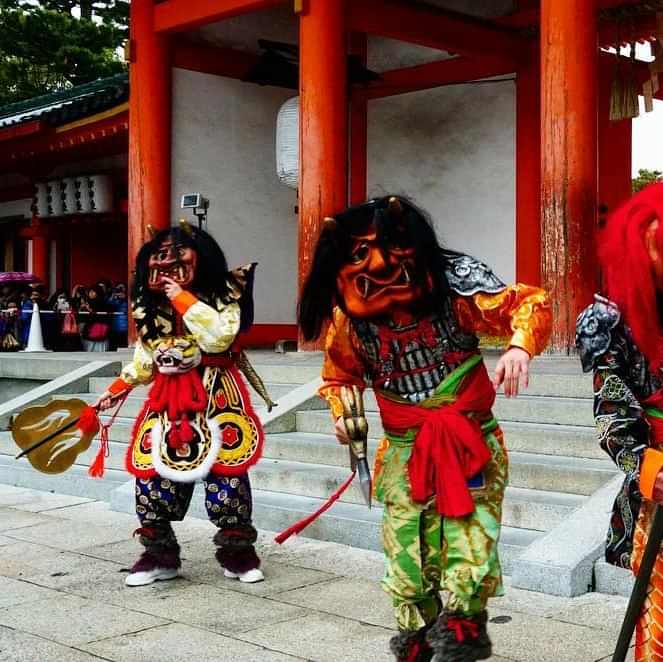
Setsubun Matsuri
節分祭
When: 3 of February, all years same day
Where: Heian-jingū Shrine
Celebrated on the day before spring begins in many Kyōto’s shrines, the Heian-jingū offers a unique entertainment. The event consists in a group of ogre, representing the bad luck, assaulting the shrine while scaring people.
Then, shrine parishioners start throwing roasted soybeans at ogres making them flee shouting “bad luck out, good luck in” in Japanese.
At the end of the event, these lucky beans, called fukumame, are distributed by the shrine staff from the stage to the assembled crowd to receive them as a good omen for the new year.
Visit the official website (Japanese) to know more on shrine's festivals.
Pic © hana_633
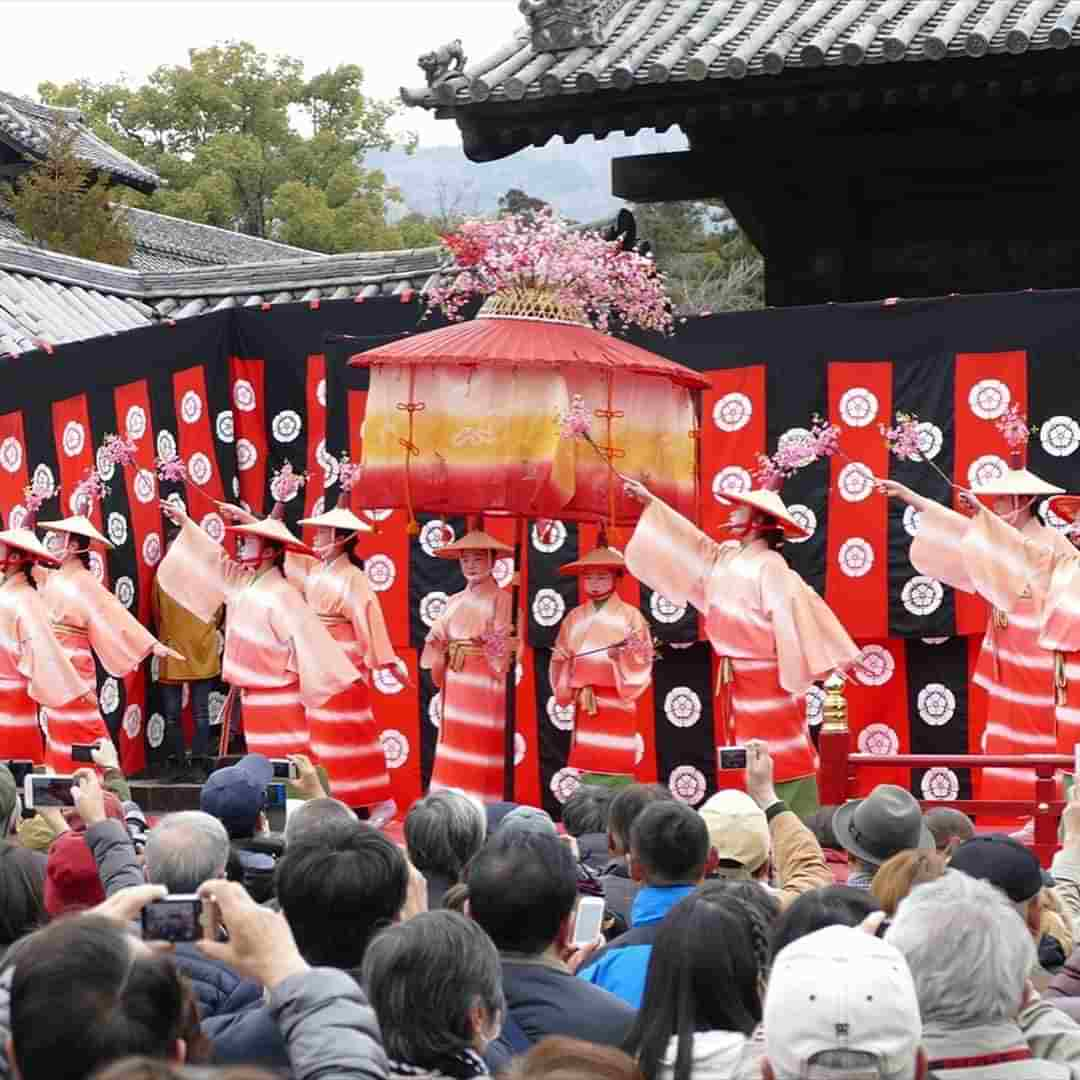
Hanezu Odori
はねず踊り
When: last Sunday of March
[past dates: March 31 (2019), 25 (2018)]
Where: Zuishin-in Temple
Traditional dances are performed at different hours, accompained by koto music and singings. Also mochi rice cakes are made throughout the day, ready to eat or to take home.
Also, the temple garden is famous for its plum trees, which are in full bloom at this time.
Visit the official website (Japanese) to know more on temple's festivals.
Pic © kyotoimakore
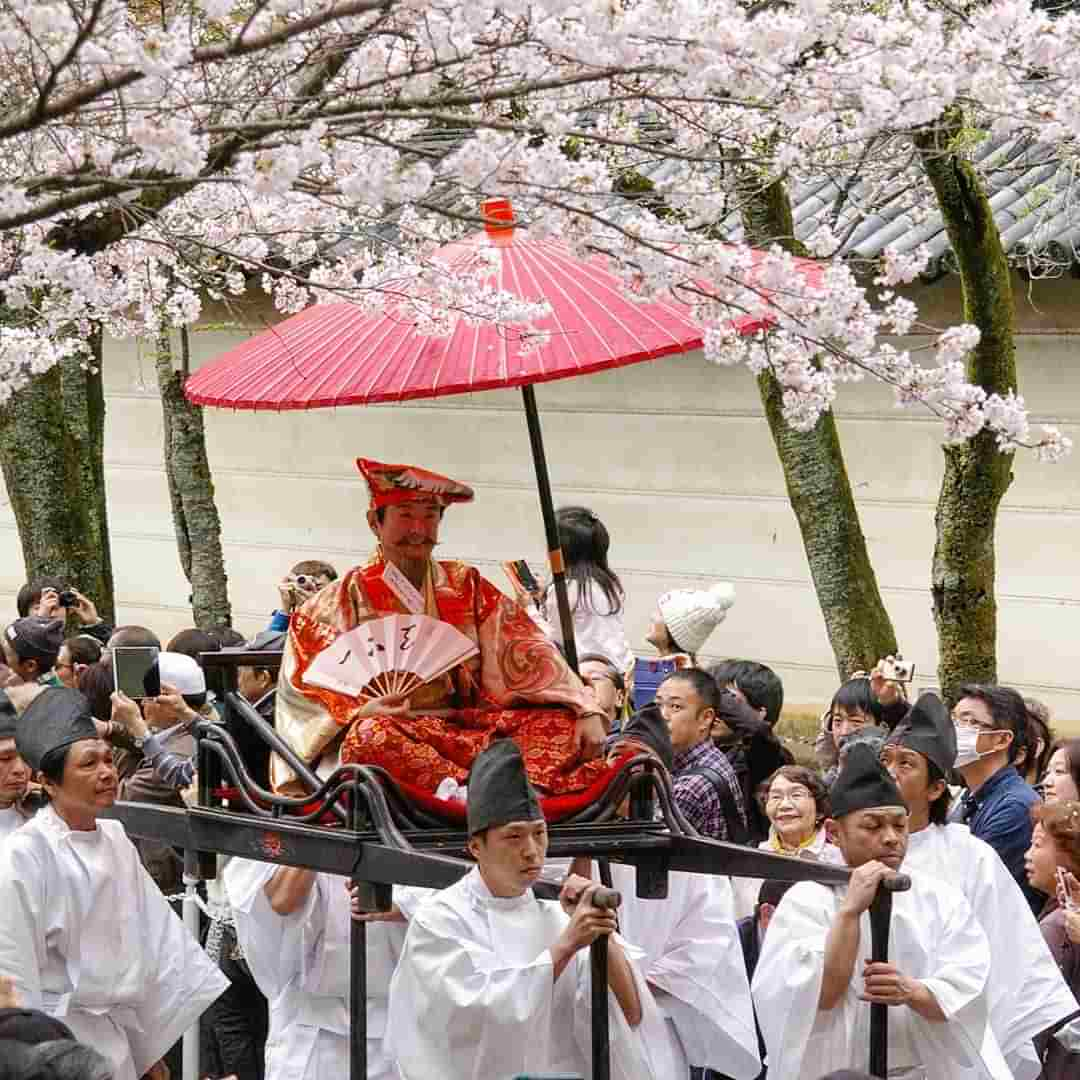
Hōtaikō Hanami Gyōretsu
豊太閤花見行列
When: 2nd Sunday of April
[past dates: April 10 (2022), 14 (2019), 8 (2018)]
Where: Daigo-ji temple
A large procession is held from 13:00 to 15:00 to remember the largest tea party of all time, held in Kyōto by one of the greatest shogun of Japan, Toyotomi Hideyoshi.
During the procession, over 150 partecipants wear historical costumes while a man, representing the shogun, is beign carried on a sedan chair. Upon arriving at the temple, a number of bugaku court dances are performed.
Visit the official website to know more.
Pic © amano.jun
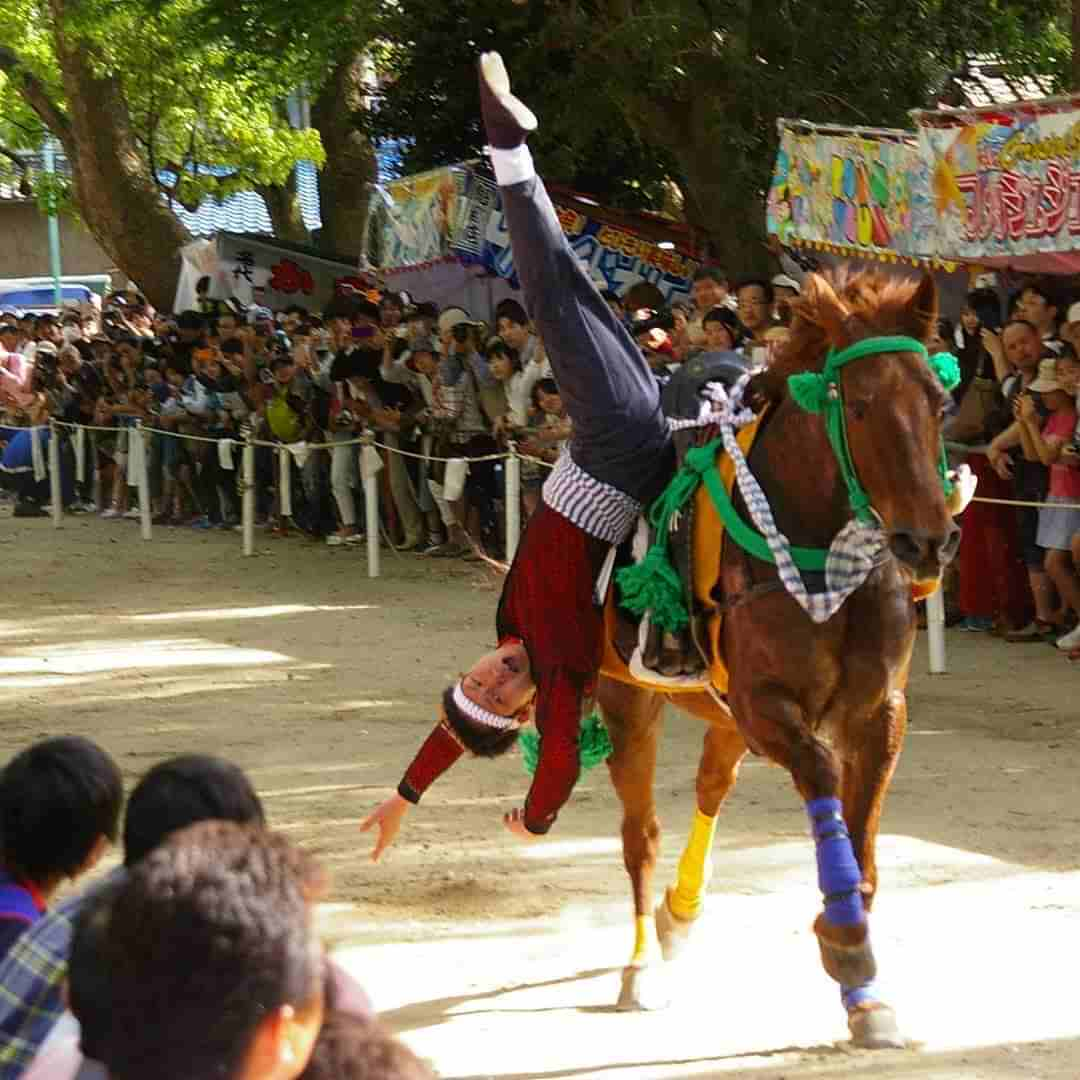
Fujinomori Matsuri
藤森祭
When: 1~5 May, all years same days
Where: Fujinomori-jinja Shrine
The Fujinomori-jinja is an ancient Shinto shrine south of Kyōto, built more than 1200 years ago. The festival main event is held on May 5, the kakeuma shinji, an acrobatic horse riding scheduled between 13:00 and 15:00.
On the way to the exhibition, loads of festive food stalls are set and a large crowd gathers to watch the performances. The festival also includes mikoshi parades in the morning and late evening.
Visit the official website (Japanese) to know more.
Pic © amano.jun
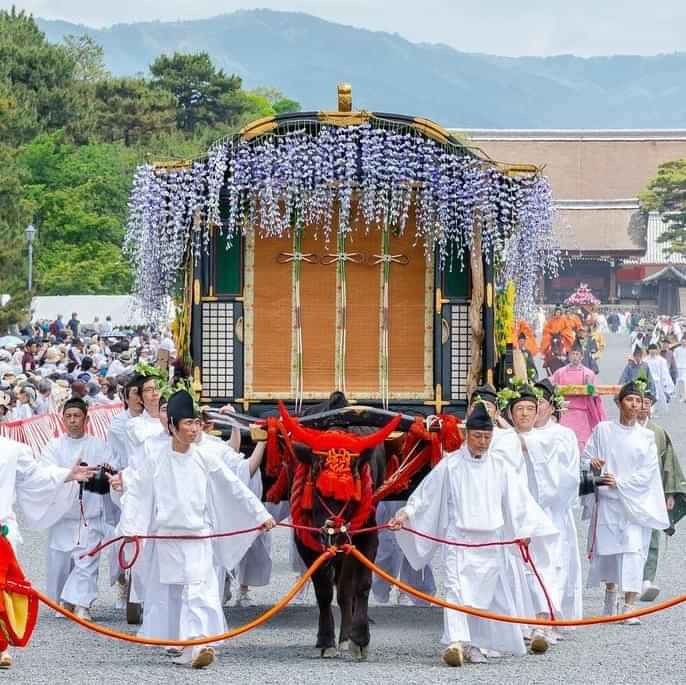
Aoi Matsuri
葵祭
When: 15 of May, all years same day
Where: Kyōto Imperial Palace
This festival is one of the top three festivals in Kyōto, consisting in a huge procession and historic reproduction held by Kamigamo and Shimogamo shrines to pray to the Kami for a bountiful harvest.
The procession starts from the Kyōto Imperial Palace around 10:30, with hundreds of partecipants dressed up in Heian period costumes, whose the most important character is a woman impersonating the imperial princess.
Visit the official website (Japanese) to know more.
Pic © furutanimunenobu
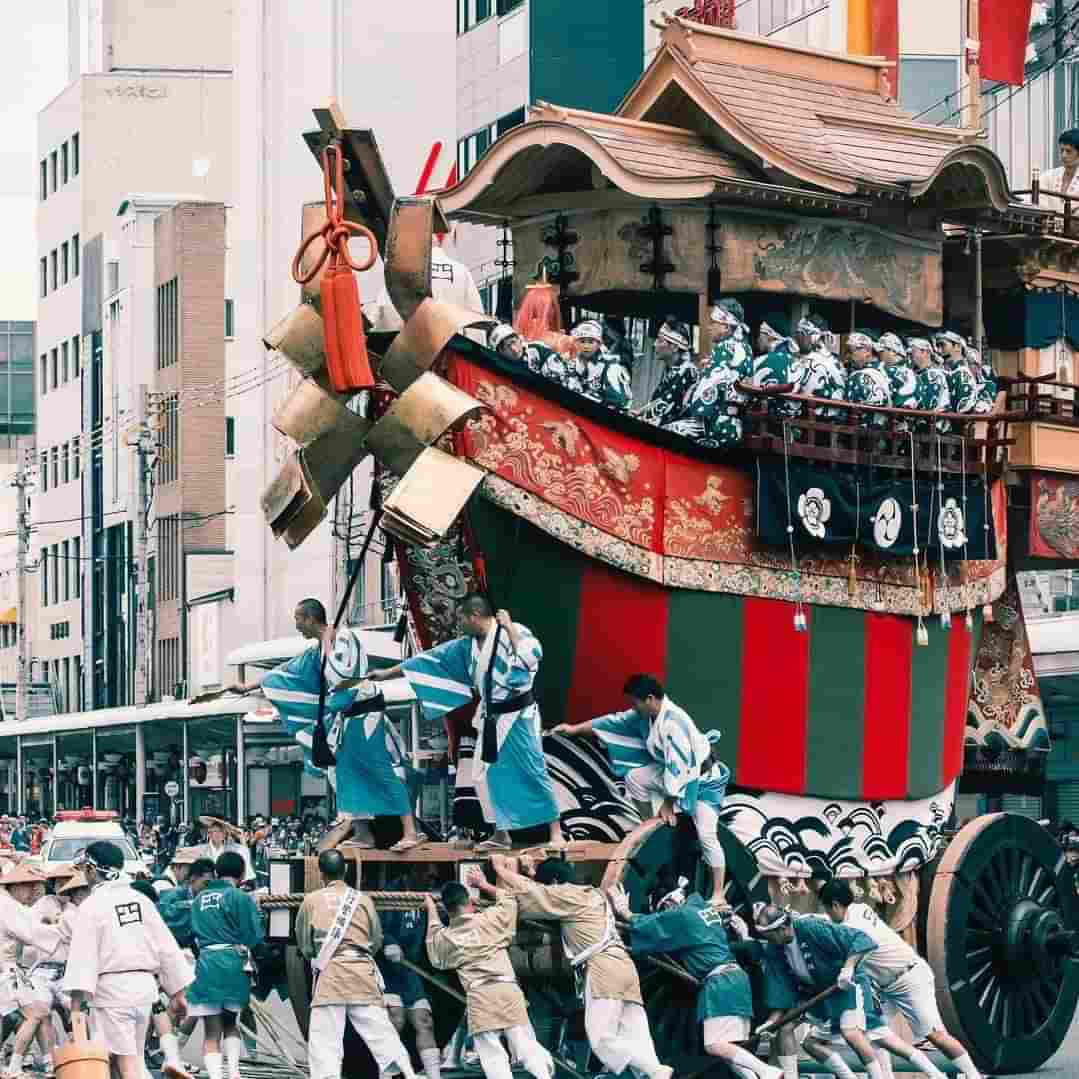
Kyōto Gion Matsuri
京都祇園祭
When: 1~31 July, all years same days
Where: Nishiki-ichiba Market area, check the interactive map for the procession routes
It is known as one of the top three float festivals of Japan, along with Takayama and Chichibu ones. During the whole month, there are many events across the area, with the climax of Yamaboko Junkō procession on July 17, from 9:00 to 13:00.
The procession features floats 25 meters tall called Hoko and smaller ones called Yama. The second important procession is scheduled for July 24, from 9:30 to 12:00.
Visit the official website (Japanese) to know more.
Pic © tabokin
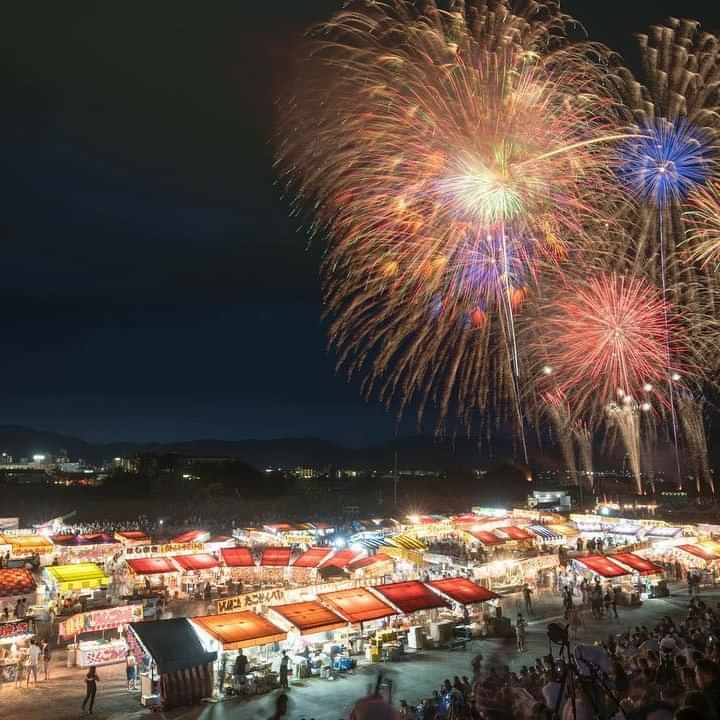
Kameoka Heiwasai Hozugawa Hanabi Taikai
亀岡平和祭保津川花火大会
When: 11 of August, all years same day
Where: Ōigawa Ryokuchi Higashi-kōen Park
One of the few huge fireworks show in the prefecture, in Kameoka city. The show starts at 19:30 along the river, with loads of festive food stalls and people ready to enjoy the 8000 fireworks .
Visit the official website (Japanese) to know more.
Pic © ryostory1124
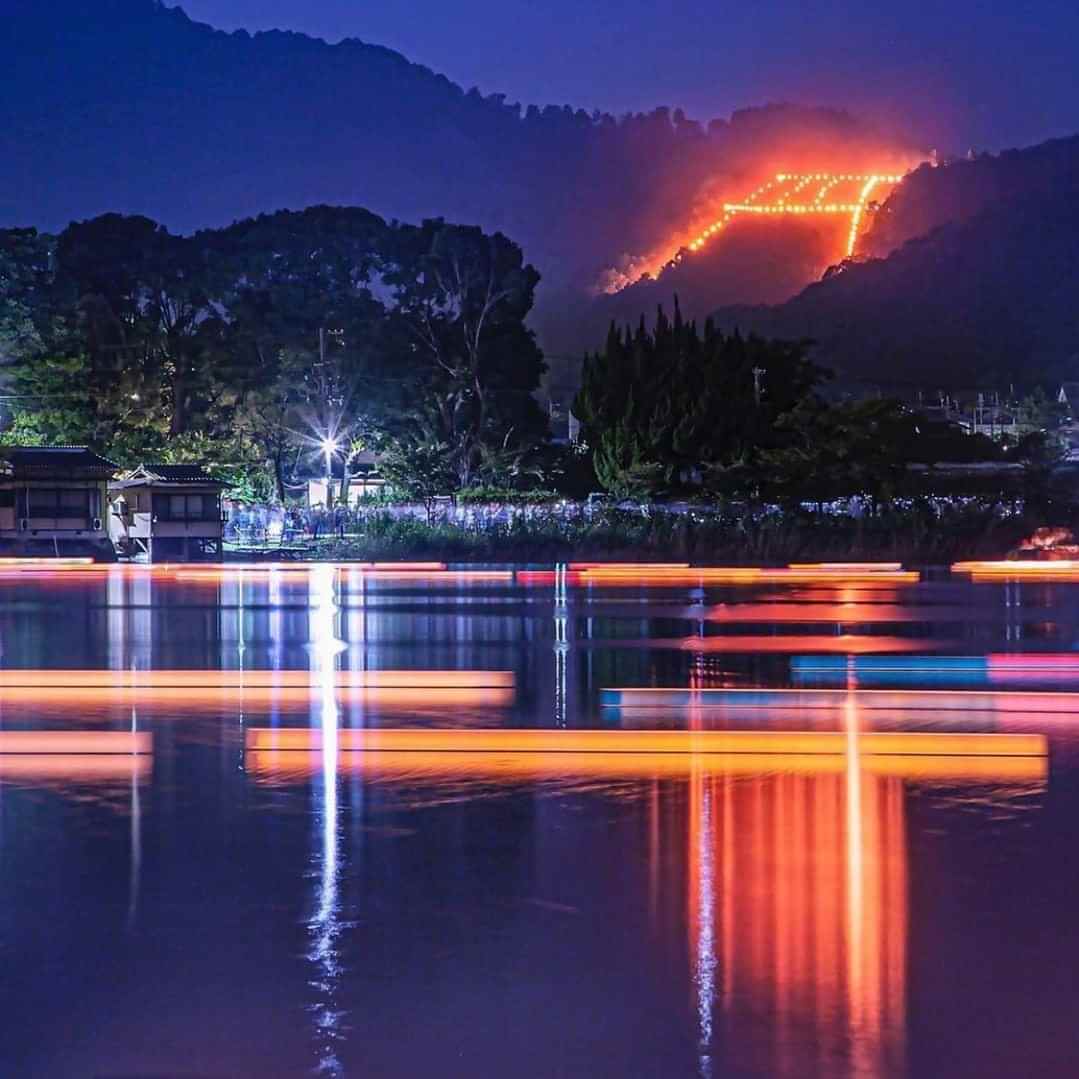
Gozan Okuribi (Daimonji)
五山送り火 (大文字)
When: 16 of August, all years same day
Where: different view spots around Kyōto city
On August 16, Kyōto guides ancestor's spirits back to the other world lighting 6 kanji-shaped huge bonefires on nearby mountains, from 20:00 to 20:20. Check the best viewing spots, heading there in advance to avoid crowds.
Festive food stalls fill parks close to those spots, and colorful Buddhist lanterns are floated on lakes and rivers, guiding the spirits over the water.
Our favorite spot is Hirosawa-no-ike Pond, where you can see the last kanji fire, the torii.
Visit the official website (Japanese) to know more.
Pic © tabokin

Matsuage
松上げ
When: 15 or 24 of August (depending on the village), all years same days
Where: Hanase, Kumogahata, Hirogawara and other villages in Kyōto prefecture
This late evening event is held across many rural villages on different dates. For example on August 15 it is held at Hanase while on August 24 it is held in Kumogahata and Hirogawara villages.
The festival is a ritual in which the villagers try to light a twenty meter high torch by throwing small torches from ground level. All those small lights create a magical effect flying to the top in the night sky.
Visit the wikipedia webpage or this detailed article (Japanese) to know more.
Pic © kyotoimakore
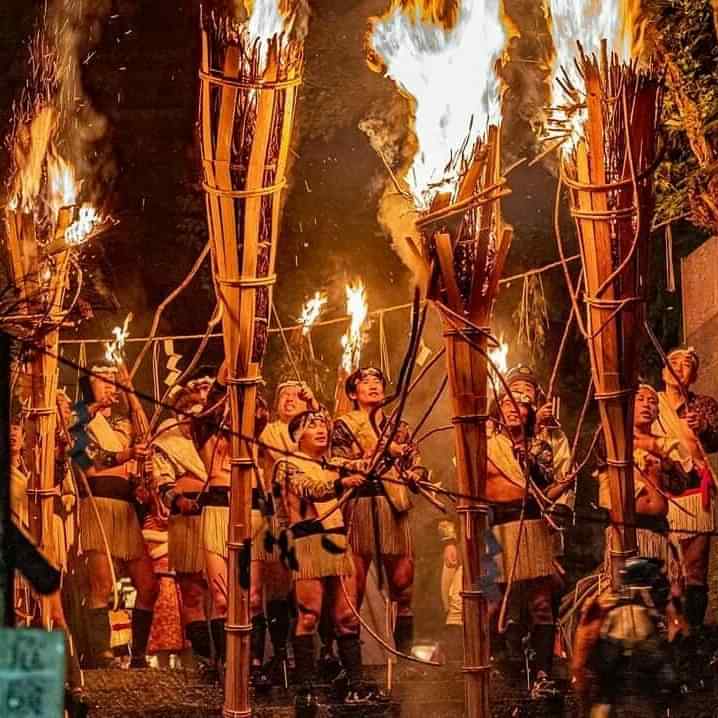
Kurama-no-Hi Matsuri
鞍馬の火祭り
When: 22 of October, all years same day
Where: Yuki-jinja Shrine
One of the most famous fire festivals in Kyōto, based on the journey of Kami Yuki Daimyōjin: legend tells that after a series of disaster in Kyōto, Yuki climbed Mount Kurama trying to calm down the bad luck.
80kg huge torches are prepared, fired and carried by strong men dressed in traditional costumes at sunset. A mikoshi parade around Kurama village takes place on the same day.
Visit the official website (Japanese) to know more.
Pic © kei_yoshida0037
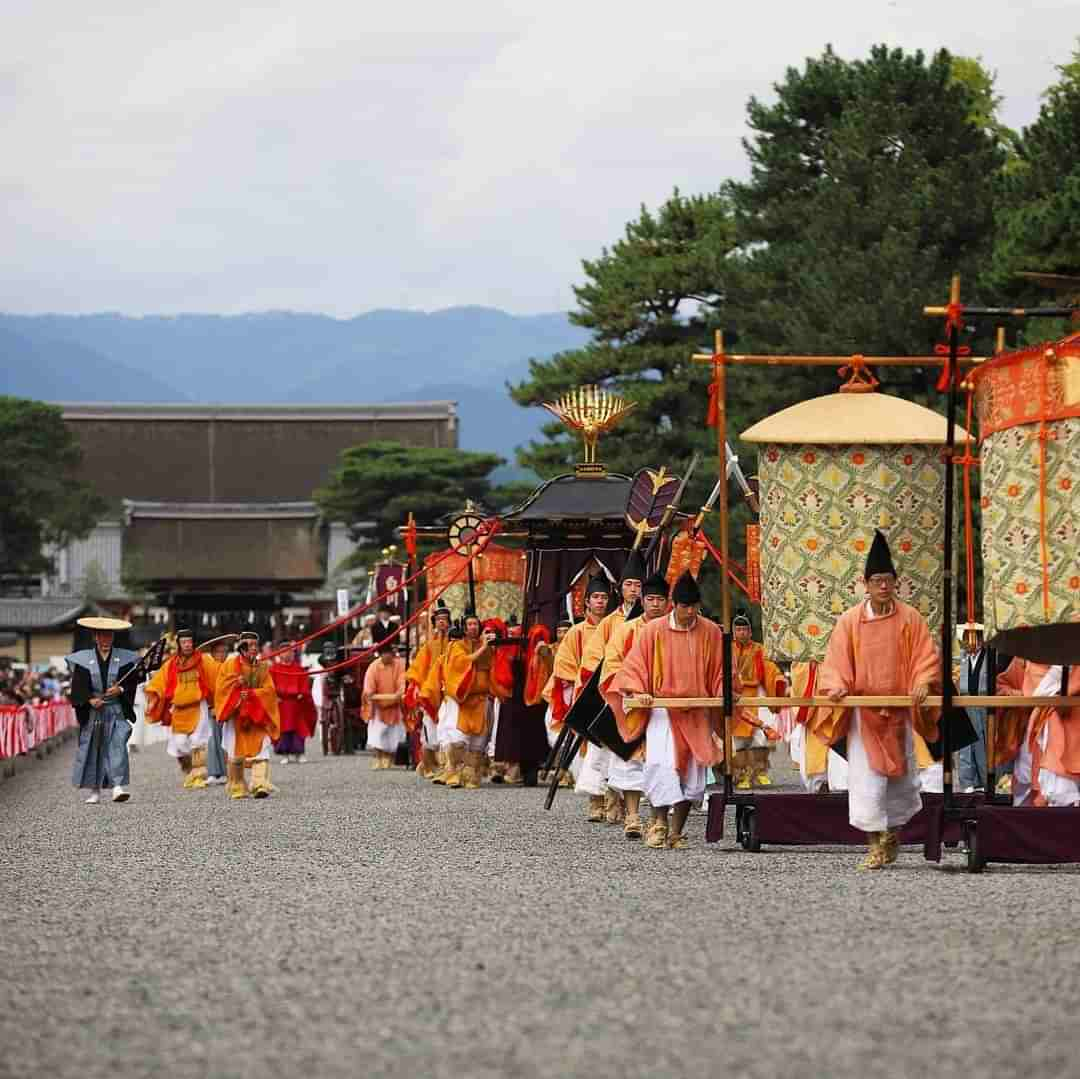
Jidai Matsuri
時代祭
When: 22 of October, all years same day
Where: Kyōto Imperial Palace
Also named “festival of the ages”, this is the last of the three most important festivals in Kyōto, a 5 hours long procession with countless volunteers dressed in historical costumes.
The procession starts from Kyōto Imperial Palace at 12:00, heading to Heian-jingū Shrine through the Oike-dōri Street.
Visit the official website (Japanese) to know more.
Pic © shiny1628
Kyōto monthly markets (extra)
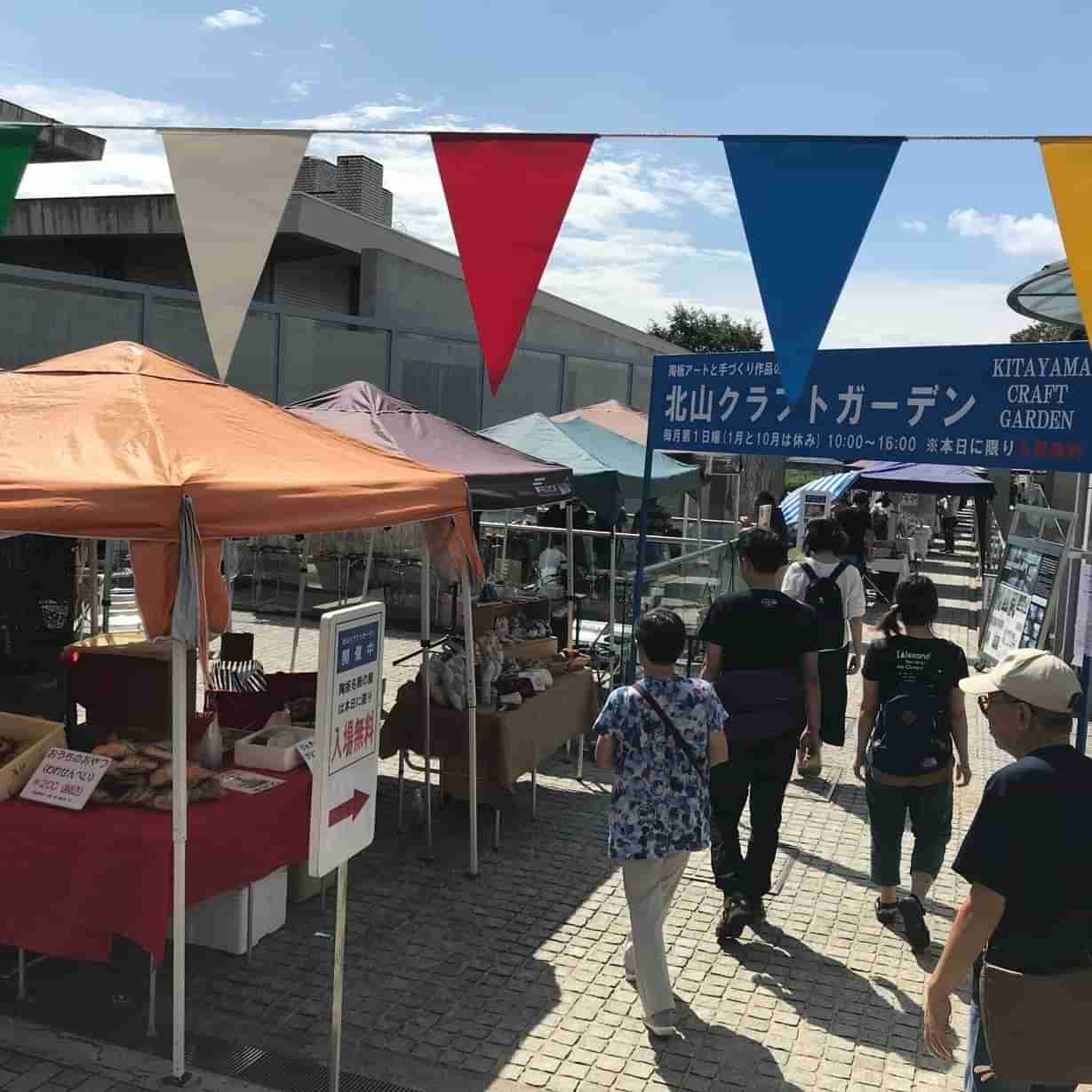
Kitayama Craft Garden
北山クラフトガーデン
When: 1st Sunday of every month (except January and October)
Where: Tōban Meiga-no-Niwa garden
The first handcraft market of the month, held from 10:00 to 16:00 with 40~60 stands, easily accessible thanks to Kitayama subway station. It's close to Kyōto's botanical garden to have a pleasant walk among the greeneries.
Visit the official website (Japanese) to know more.
Pic © craft_kyoto
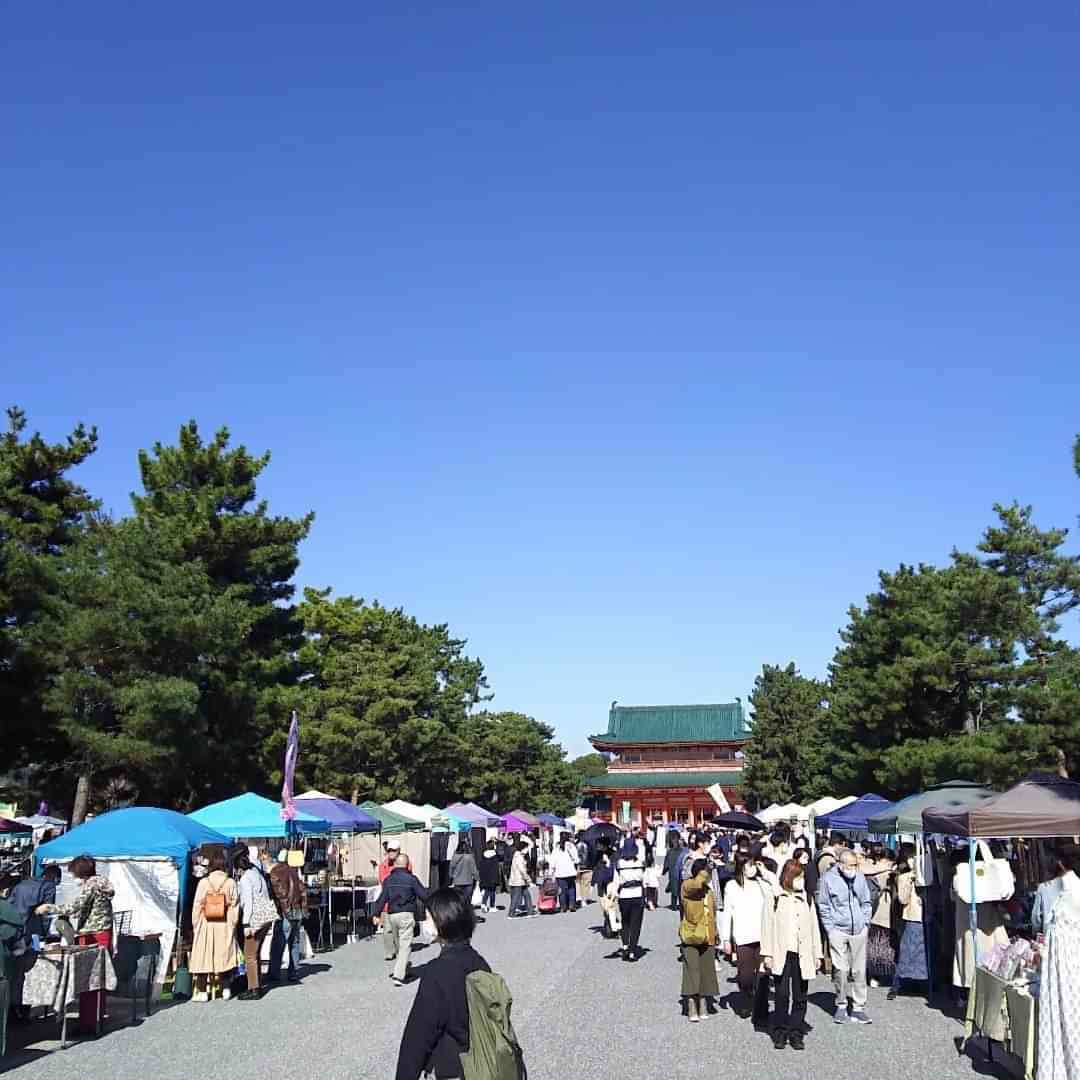
Heianraku-ichi
平安楽市
When: 2nd Saturday of every month
Where: Okazaki-kōen Park, in front of Heian-jingū Shrine
This market, from 10:00 to 16:00, features around 250 stands with handmade goods of every kind. During weekends, the area attracts many visitors thanks to the nearby Heian-jingū Shrine and Kyōto city zoo.
Visit the official website (Japanese) to know more.
Pic © matchupbunguten
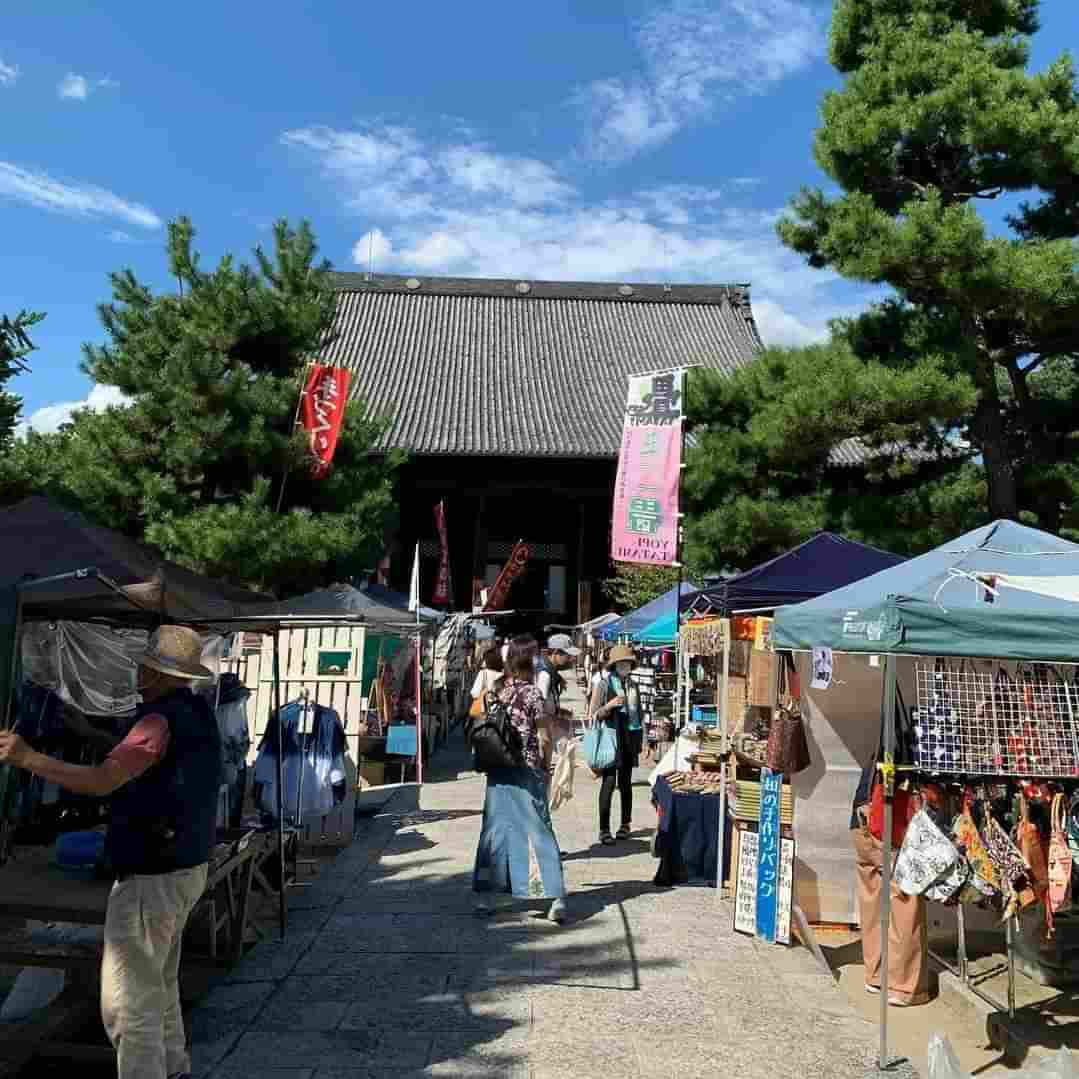
Chion-in Tezukuri-ichi
知恩寺手づくり市
When: 15 of every month
Where: Chion-in Temple
This market, held from 8:00 to 16:00, features over 300 stands with handmade food and ethnic products, wonderful glass fūrin and unique chopsticks.
The market is located north with respect to Kiyomizu-dera Temple.
Visit the temple's official website to know more on this market.
Pic © hiromizhongxie
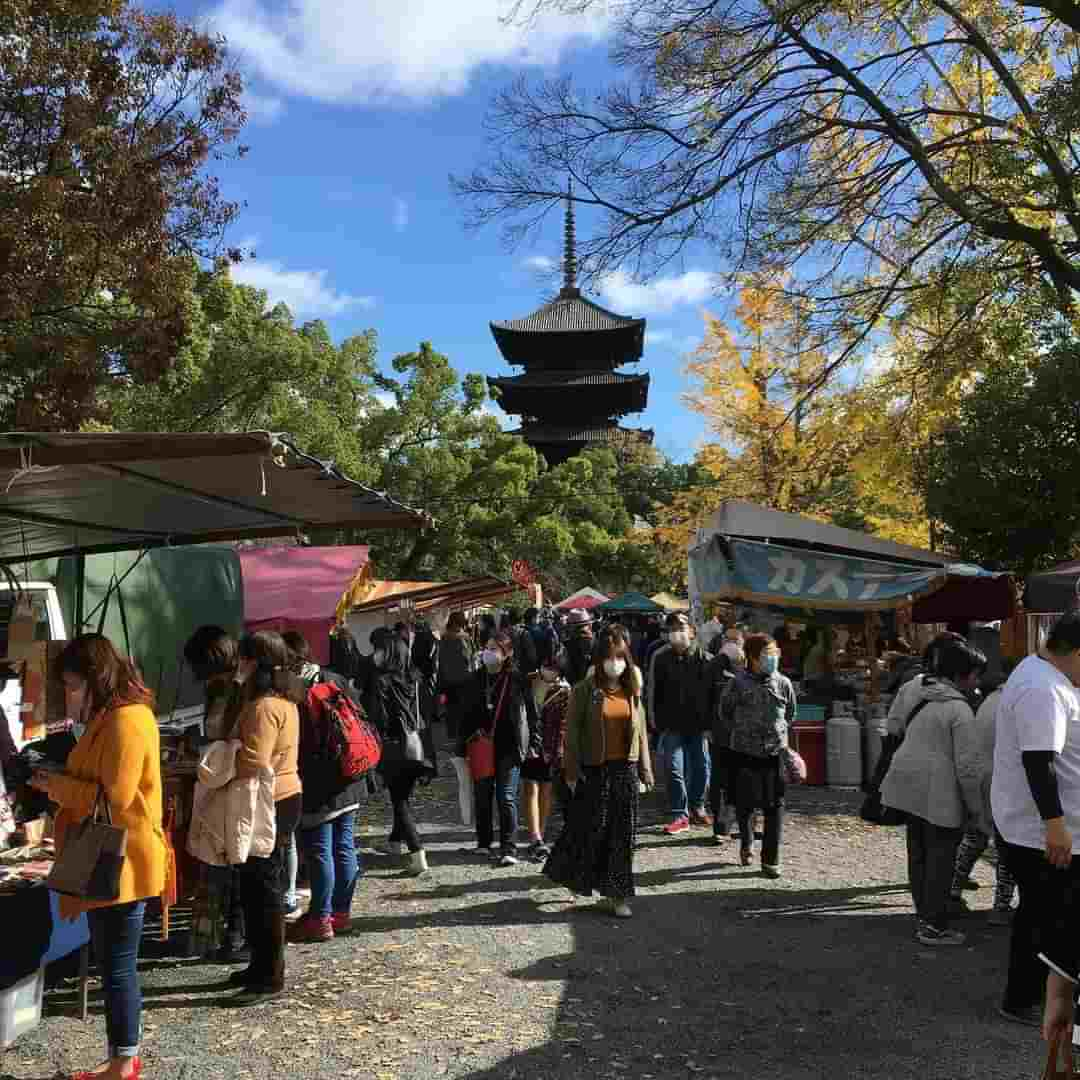
Kōbō-ichi
弘法市
When: 21 of every month
Where: Tō-ji temple
This is the biggest market in Kyōto, with large crowds gathering from 8:00 to 16:00 among hundreds and hundreds of stalls selling every type of goods. The exploration requires more than two hours, with many temples to visit in the area.
This monthly market is related to a Buddhist historical event: Kūkai, an important Buddhist monk also known as Kōbō Daishi, died on 21/3/835; since that day, pilgrims have gathered on the 21st of each month to pray and tea shops have begun to display their products to customers as stalls.
Visit the temple's official website to know more on this market.
Pic © hutte_kyoto
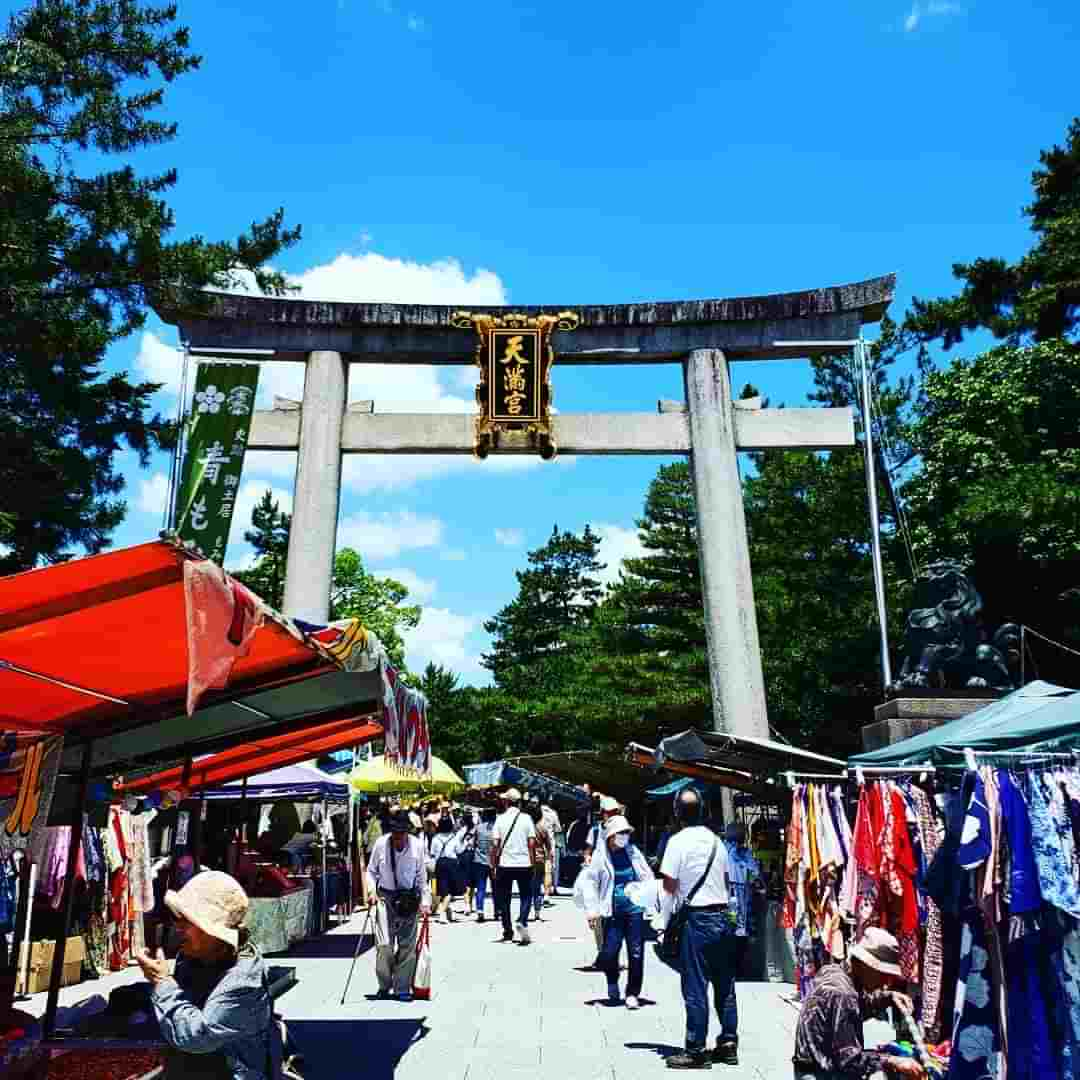
Tenjin-san
天神さん
When: 25 of every month
Where: Kitano Tenman-gū shrine
Hundreds of stalls are disposed in and around the temple, from 6:00 to 21:00, selling second hand kimono, pottery and other antiques. Food and vegetables stalls are also available.
During the market day, music and dance rituals are performed, while at 18:00 a taiko drum performance is held at the main building. At the end of the performance, you can also play these drums with musicians explaining.
Visit the temple's event website to know more on this market.
Pic © chiharun.318
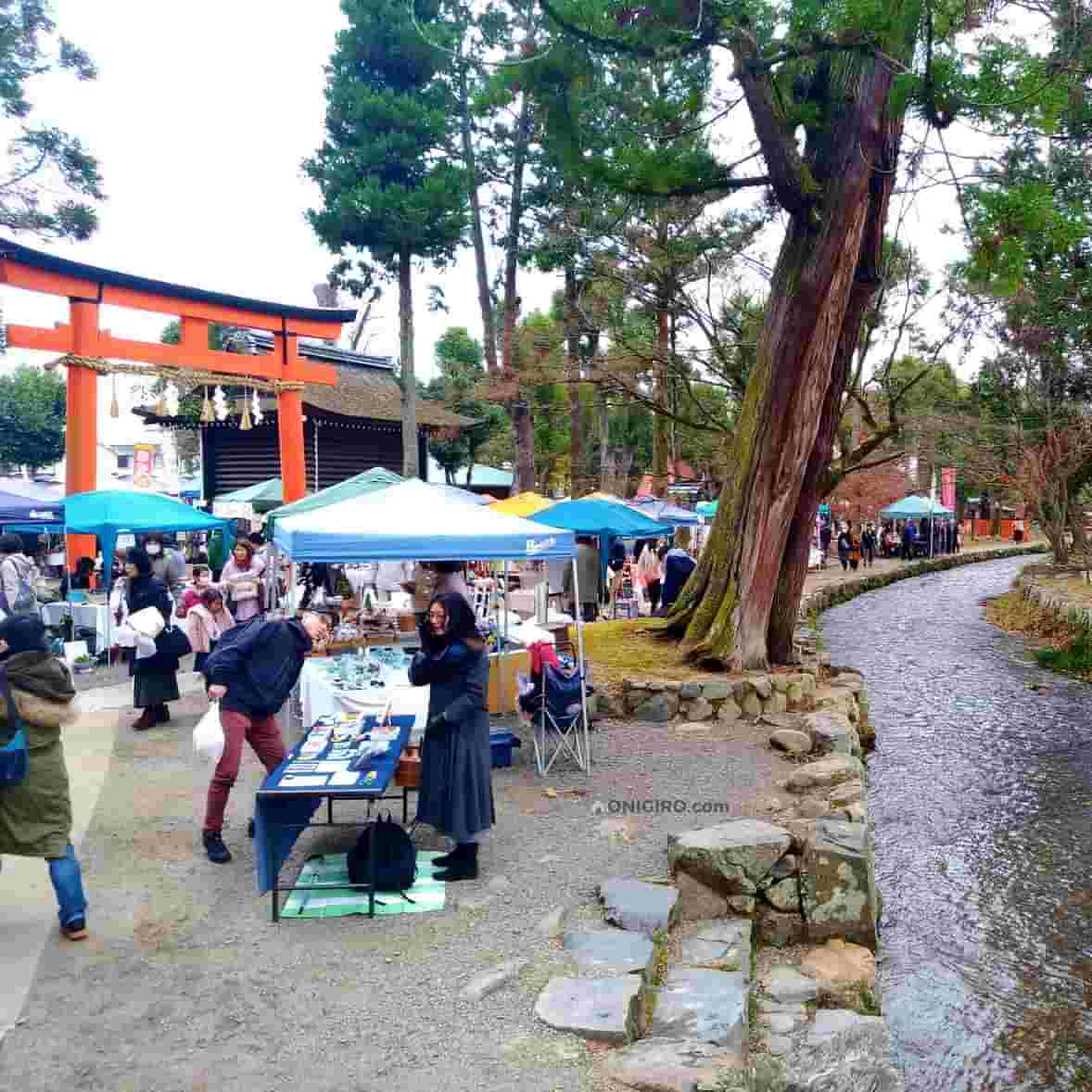
Kamigamo Tezukuri-ichi
上賀茂手づくり市
When: 4th Sunday of every month
Where: Along the river, nearby Kamigamo-jinja Shrine
This market features more than 250 stands, from 9:00 to 16:00, with handmade food, jewelry and goods of every kind exposed along a small river where kids have fun during the hot summer.
To get here, take Kyōto bus lines to reach Kamigamo-jinja Shrine, 20 minutes from Kyōto central station.
Visit the official website (Japanese) to know more.
Pic © onigiro.com
Best things to do in Kyōto
Inside this section there should be hundreds of interesting things to do in Kyōto, since the city is full of temples, shrines and other cultural sites.
Here we provide you our favorite 10 things to do in Kyōto, but Onigiro is already working on his blog for a detailed article on this topic, so stay tuned!
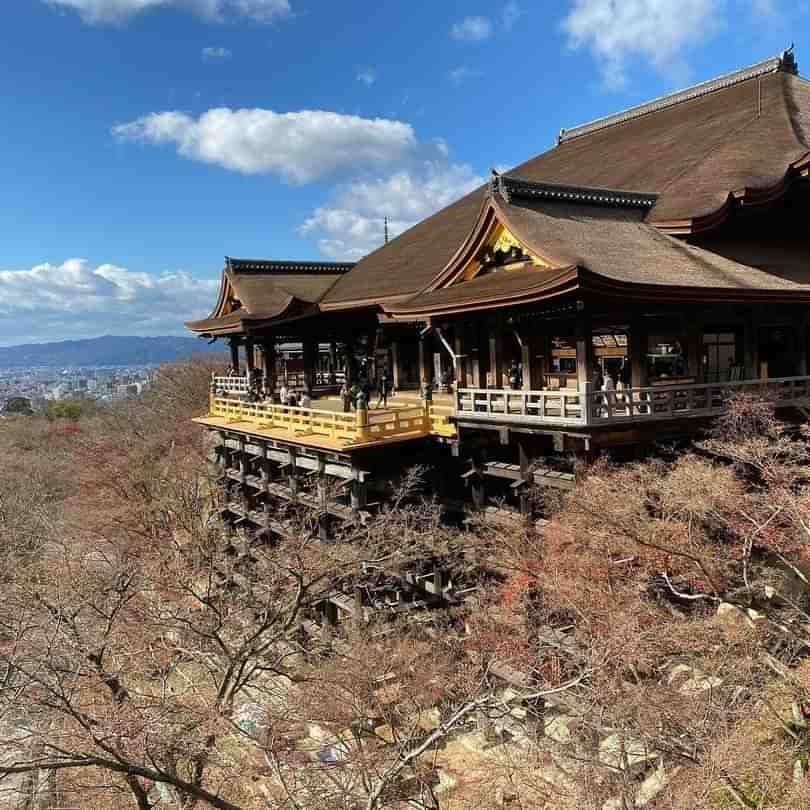
Kiyomizu-dera
清水寺
The "Temple of Pure Water", worldwide known for its wooden terrace 13 meters high. At the base of the terrace, you'll find Otowa-no-Taki waterfall, divided into three streams representing love, success and longevity: people waits in line to drink from one of those streams.
The area is full of greeneries, in particular maples and cherry trees, so both in autumn and spring the view from the terrace is amazing, with Kyōto city in the background.
Check it on Google Maps and visit the english website to know more.
Pic © venus__9877
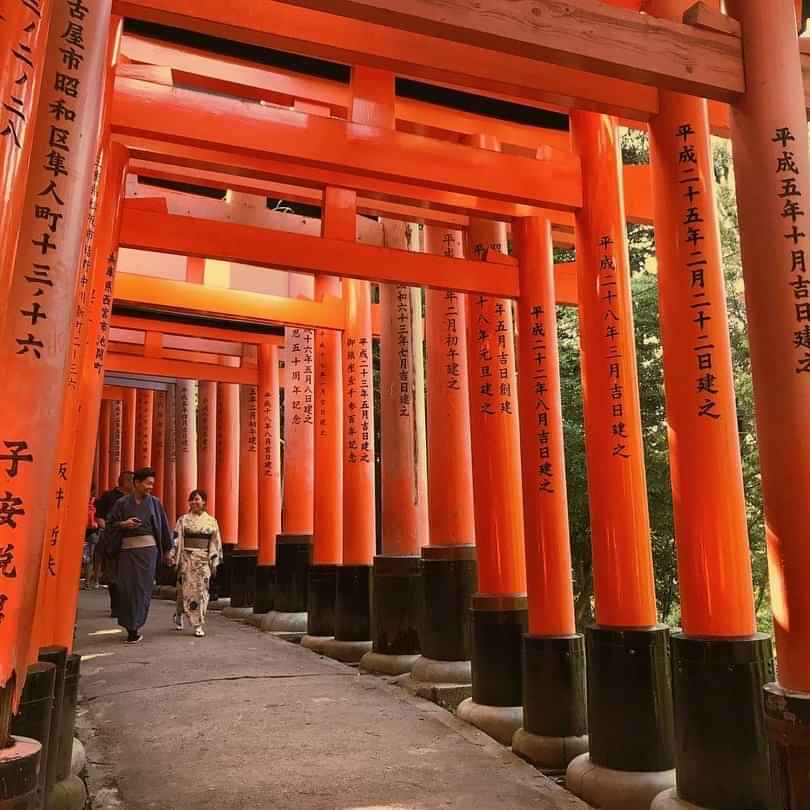
Fushimi Inari-taisha
伏見稲荷大社
This is probably the most famous Shinto shrine of Japan, anyone who has visited Kyōto surely has their photo inside its thousands of red torii gates.
Along the hike on Mount Inari-yama, you'll see hundreds of fox statues with a scroll inside their mouth: they are kitsune, the messengers of the Kami Inari. The hike to the top isn't easy and takes about 2 hours to get back to the start.
The several thousands of torii are donations from private companies, whose name and donation dates are written on their backs.
Check it on Google Maps and visit the english website to know more.
Pic © solo_tabi_ayu
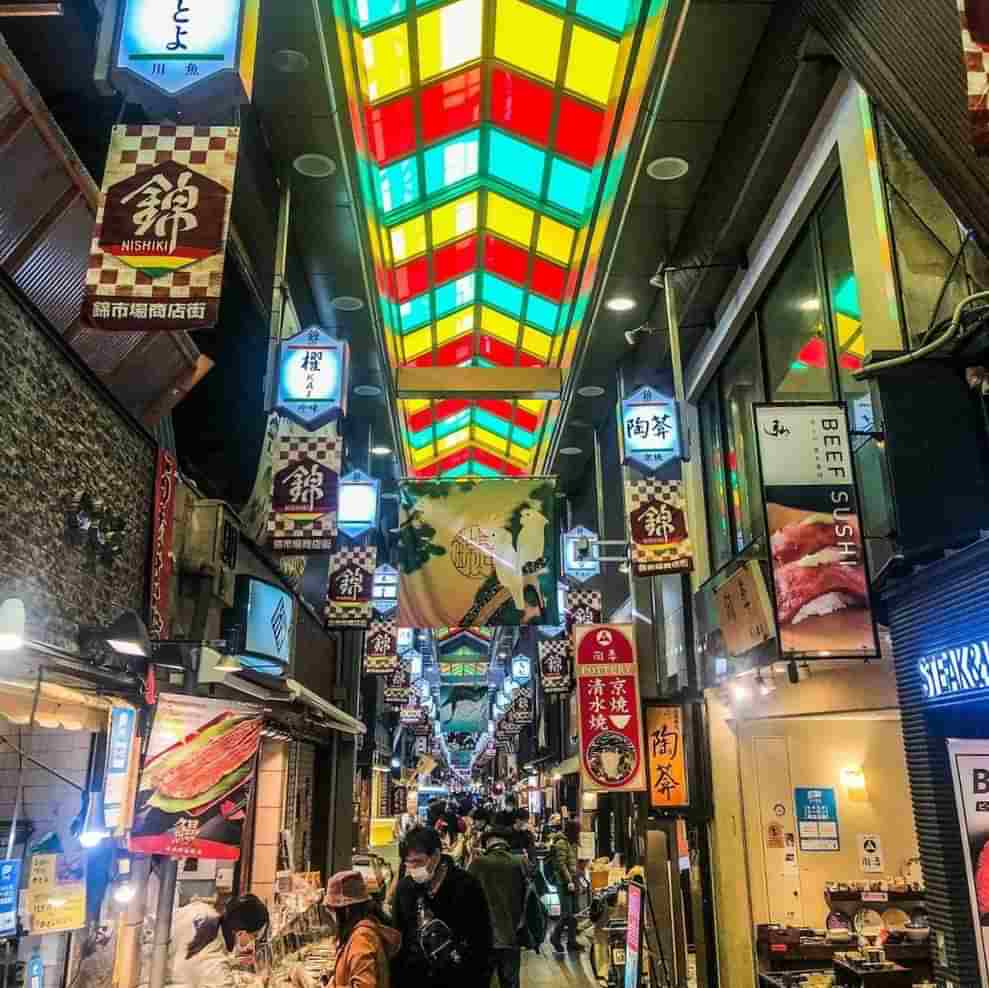
Nishiki-ichiba
錦市場
This market is located in central Kyōto. The ceiling is covered to rotect from the rain and hundreds of shops sell any kind of food, from fresh seafood to green tea or pickles.
Usually it's very crowded, with people stopping here and there to taste food delicacies. There are also knife and pottery shops along the way, but prices are a little higher than average.
Check it on Google Maps and visit the official website (Japanese) to know more.
Pic © yama_sake_zanmai
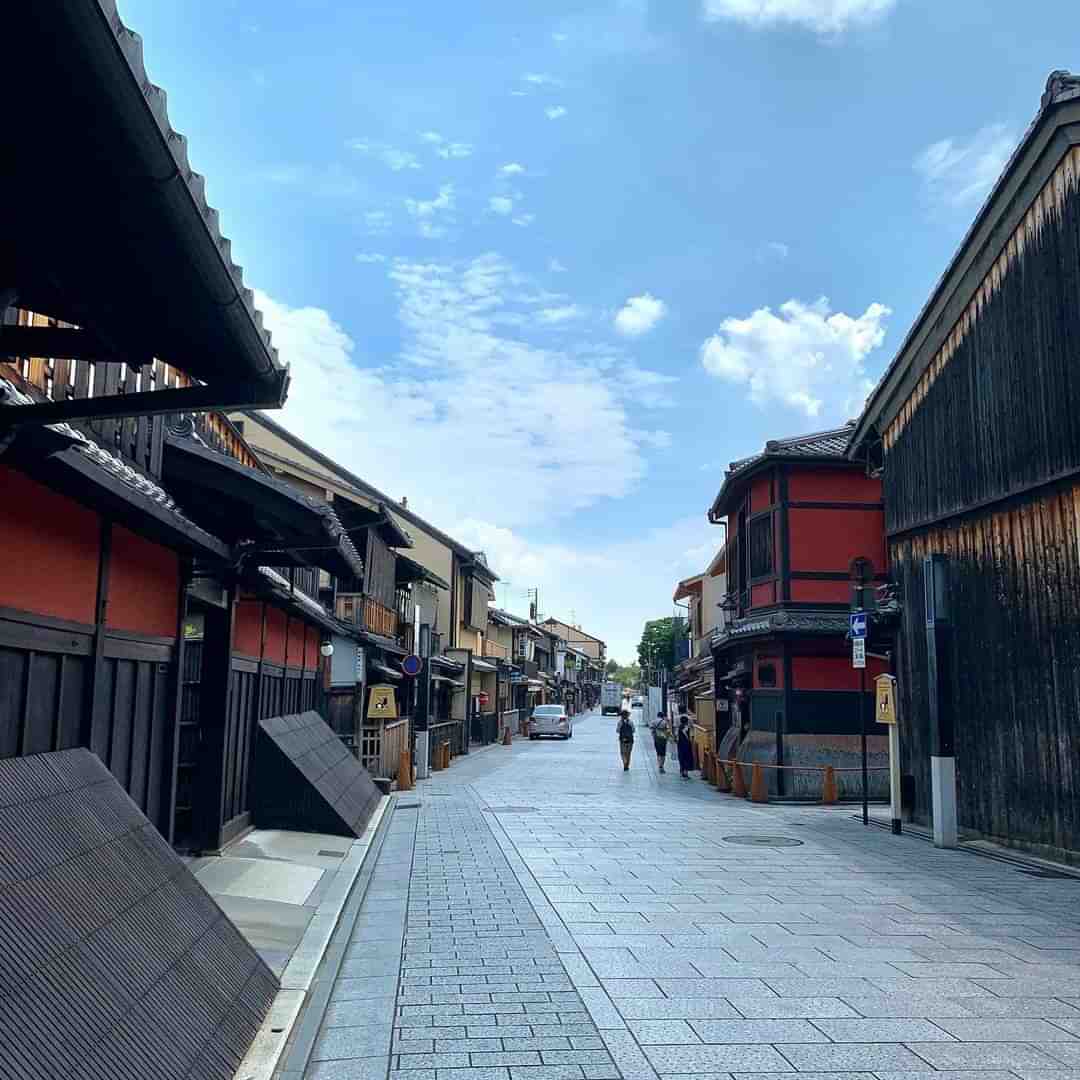
Gion-machi
祇園町
Probably the most famous traditional district of Japan, full of wooden tea houses and restaurants where geisha and maiko (geisha apprentices) entertain guests.
Walking in the area after sunset is a suggestive experience, thanks to lanterns lighted along the Hanami-koji Steeet. Being an extremely tourist district, eating in this area is really expensive.
Finally, along Shijō-dōri Street, you can buy traditional souvenirs of all types and budgets.
Check it on Google Maps or visit the english website to know more.
Pic © h.takiguti
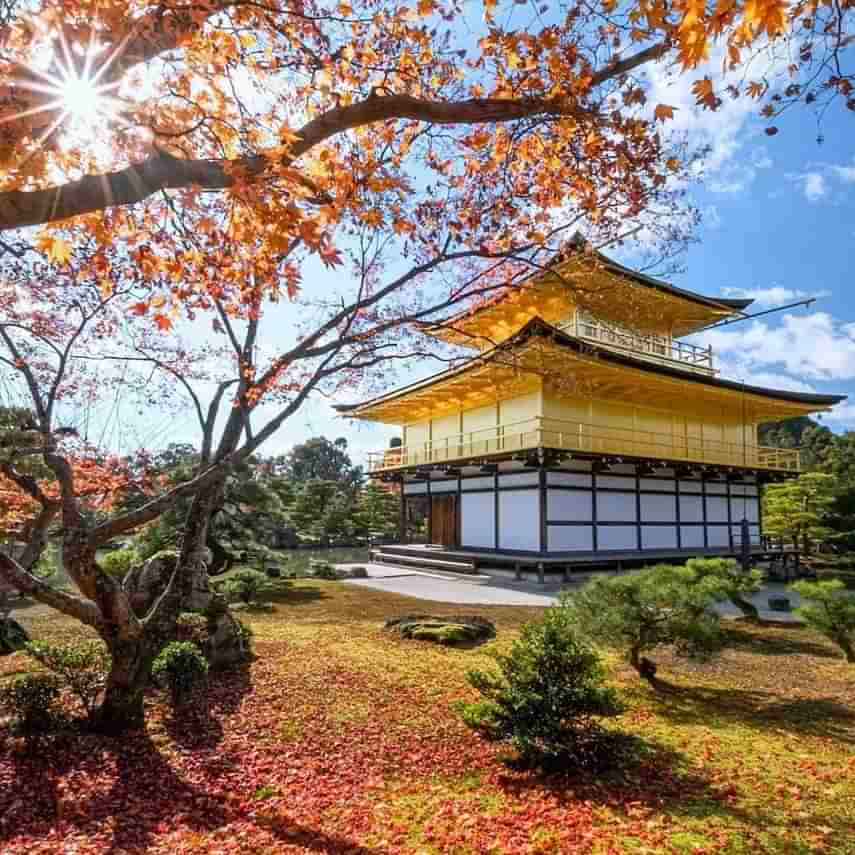
Kinkaku-ji
金閣寺
Formerly home of shogun Ashikaga Yoshimitsu, this two floor pagoda covered by golden leaves became a zen temple after his death. The pagoda was destroyed by fire and rebuilt different times because of its wood structure. The present structure dates back to 1955.
Near the entrance you can have a great view of the golden pagoda mirroring on surrounding pond, one of the most famous Japanese pictures online.
Check it on Google Maps or visit the english website to know more.
Pic © huge1091
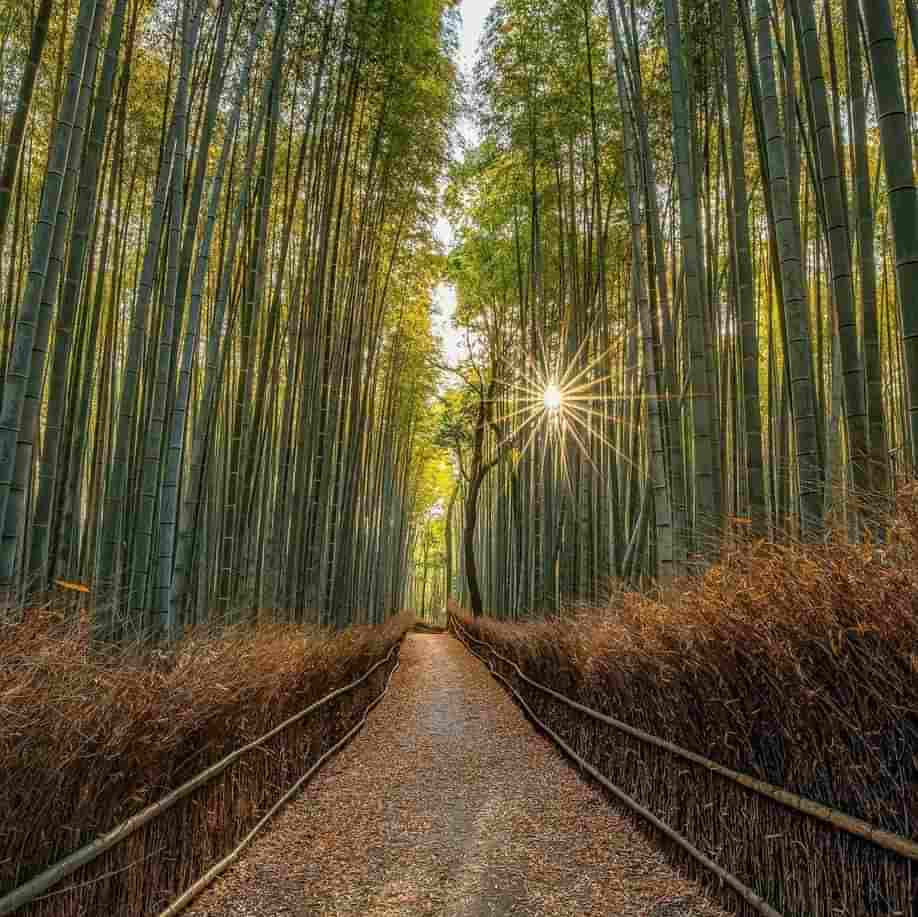
Arashiyama Chikurin
嵐山竹林
Located west of the city, this is the most famous bamboo forest in the world, scenery of many asiatic film shots.
You can get lost between gigantic bamboos more than 10 meters tall: walking among them you can barely see the sky! Many artisans in the area sell products made with this versatile and durable wood.
In the area you can also visit the famous temple Tenryū-ji.
Check it on Google Maps or read this detailed article to know more.
Pic © hasan_photography
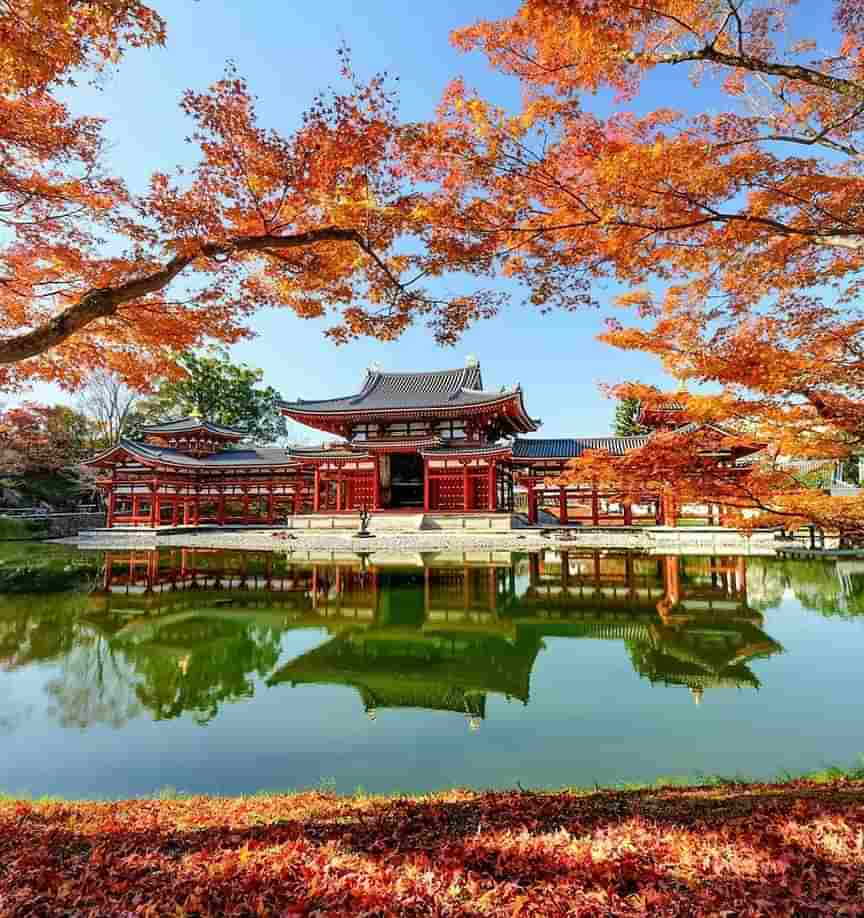
Byōdō-in
平等院
This temple was formerly used as the retirement villa of Fujiwara-no-Michigawa, a rich politician of ancient times.
After becoming a temple, the Phoenix Hall has been built, flanked by twin wing corridors on both sides. Inside the central building, a 2.4 meters high Amida Buddha watches over the surrounding pond.
From the garden you can admire two phoenix statues over the central hall and the building mirroring over the pond surface.
Check it on Google Maps or visit the english website to know more.
Pic © huge1091
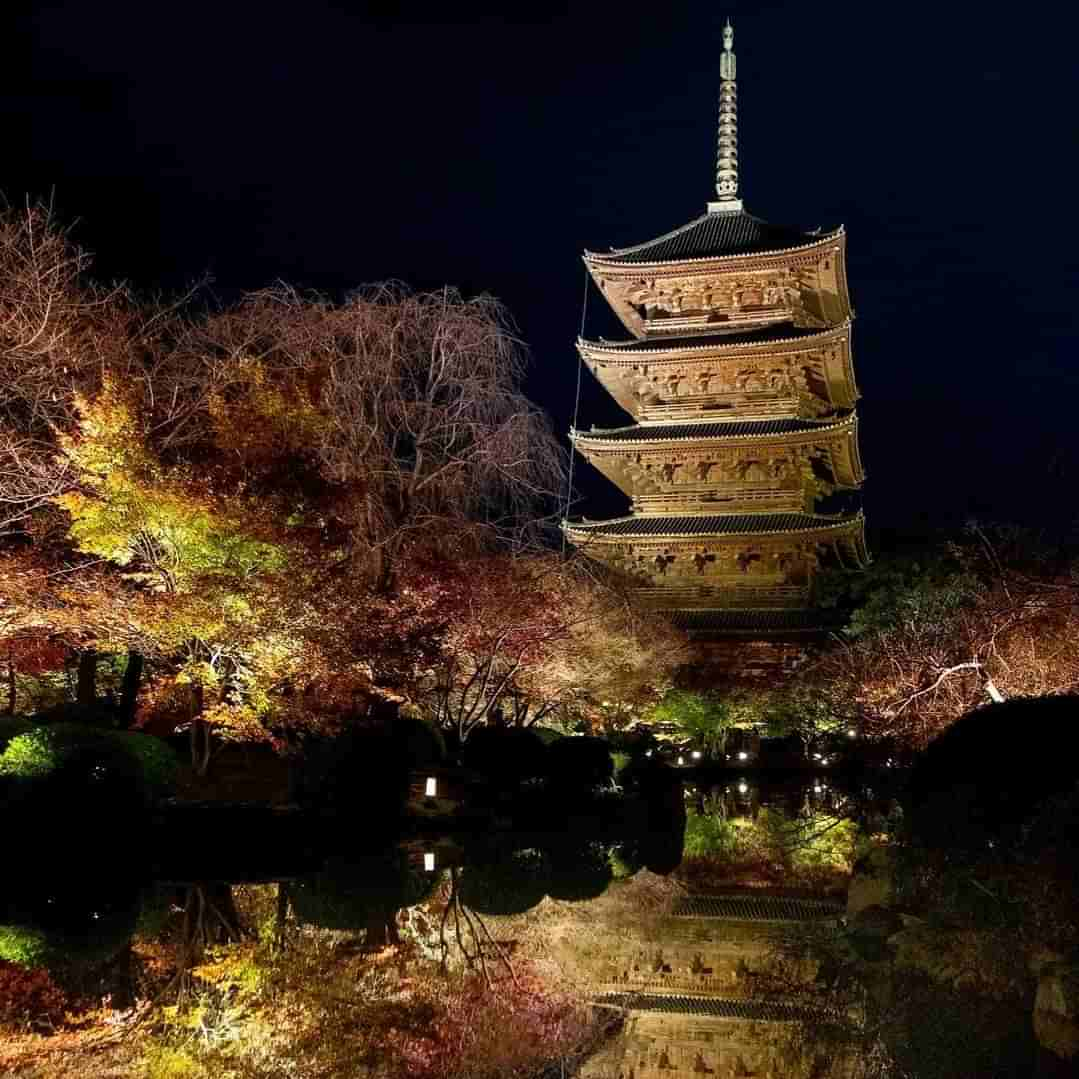
Tō-ji
東寺
The tallest 5 story pagoda of Japan, surrounded by greeneries and other Buddhist temples. On 21 of every month the temple receives thousands of visitors thanks to the Kōbō-ichi Market, the biggest flea market of Kyōto.
Even if you can admire this tall pagoda from outside, you have to pay the entrance fee to a restricted area to get closer to the building.
Check it on Google Maps or visit the english website to know more.
Pic © matsuo_photo
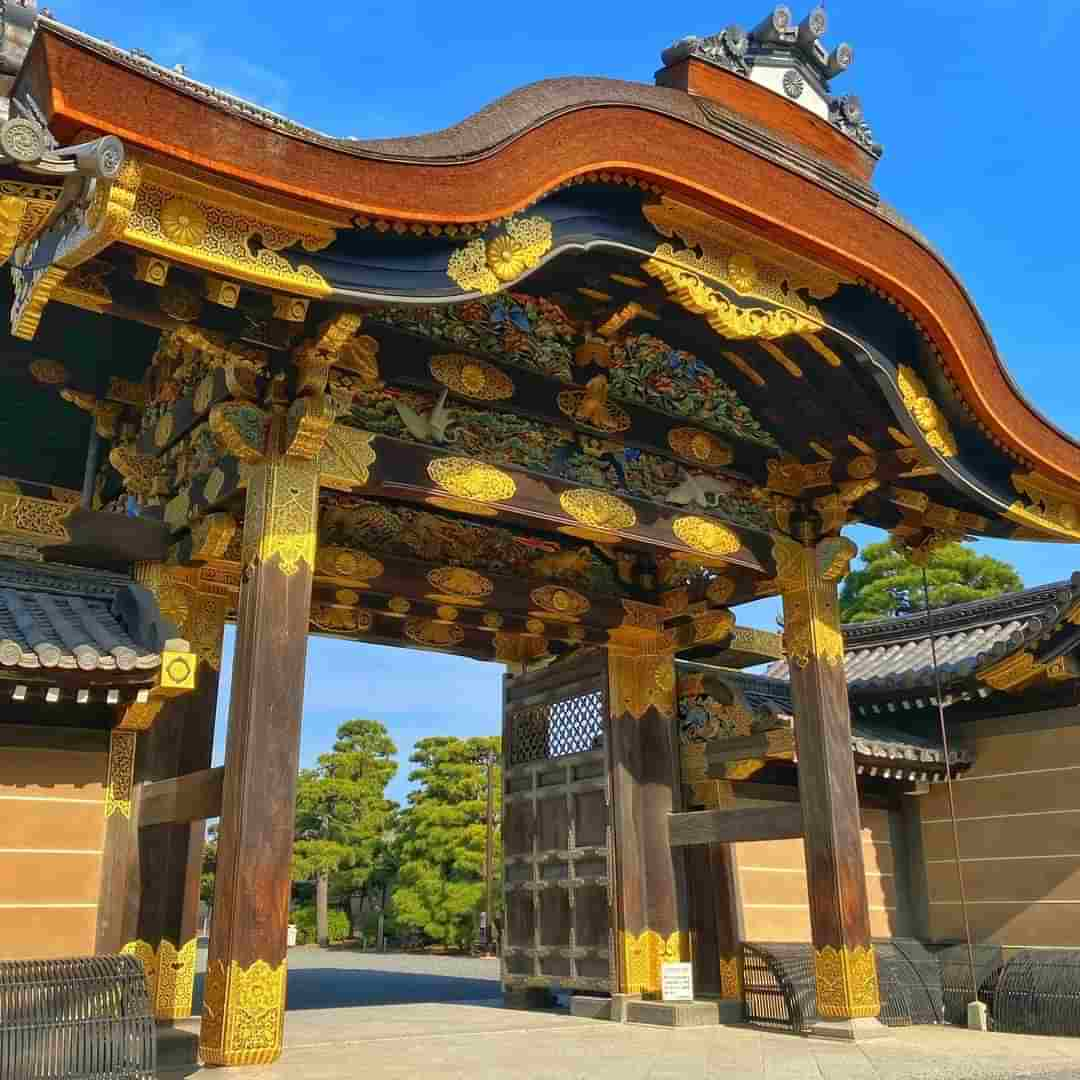
Nijō-jō
二条城
Built on 1603, this was Kyōto's residence of Tokugawa Ieyasu, first shōgun of its dinasty, the longest of Japan.
The castle main structure was a 5 story building, but on 18th century it was burnt down by a fire and was never rebuilt. Still, today you can visit the Honmaru-goten Palace that has amazing interiors.
The wonderful castle's garden features over 400 cherry trees, making the visit even more pleasant in spring.
Check it on Google Maps or visit the english website to know more.
Pic © yuuuuu07k
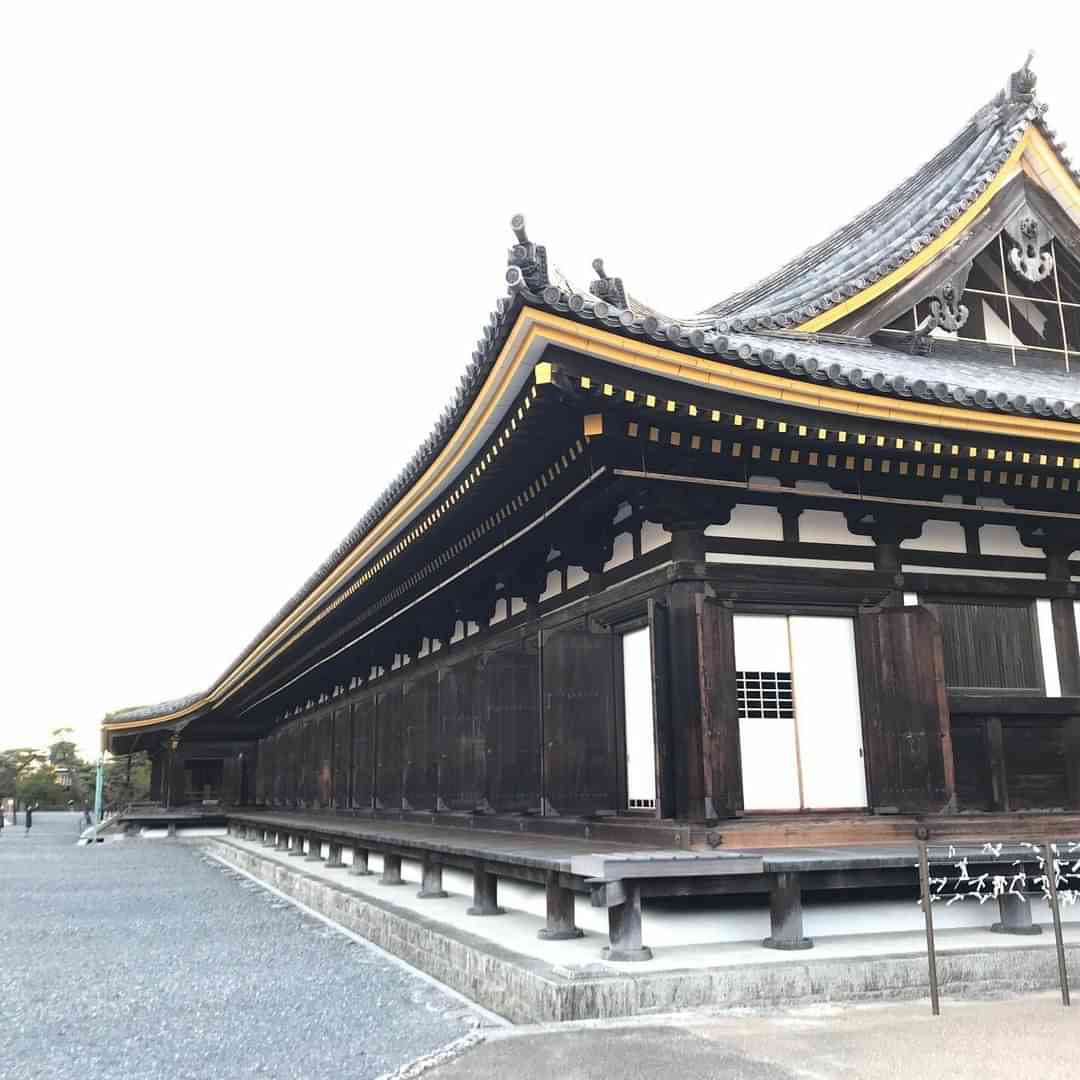
Sanjūsangen-dō
三十三間堂
Sanjūsangen-dō literally means "hall of 33 spaces": this temple, designed as Japan's National Treasure, presents a long hall with 33 spaces between columns.
Inside the hall it is not possible to take pictures, but once entering you'll be welcomed by an army of 1001 statues of Kannon defending a big seated statue of Thousand-armed Kannon, the god of mercy.
In front of the army there are also 28 statues representing many Japanese dieties flanked by Fūjin and Raijin, respectively god of wind and thunders.
Check it on Google Maps or visit the official website (Japanese) to know more.
Pic © iseya_oomiya
Kyōto typical foods
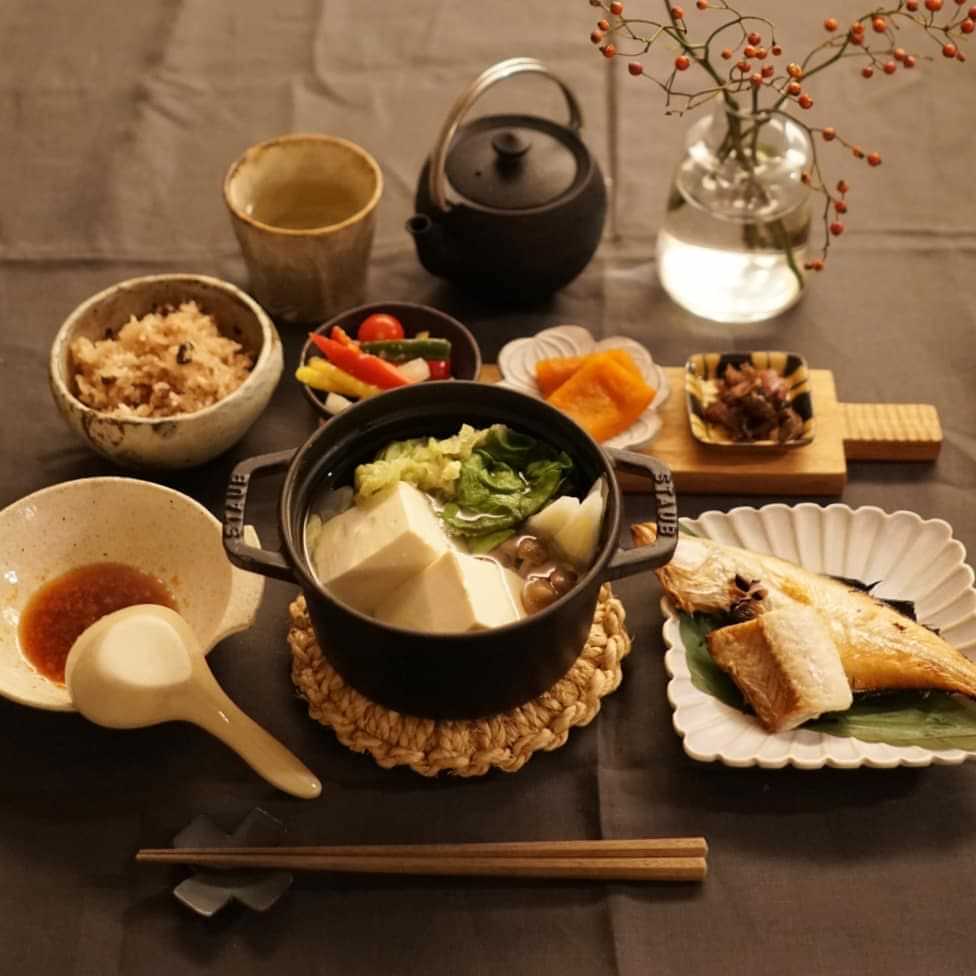
Yudōfu
湯豆腐
A simple yet amazing dish, part of Buddhist vegetarian cuisine. The name literally means "tōfu in hot water", it is served inside hot pots and you have to eat it with other toppings, like green onions and grated daikon.
In Kyōto, you'll find a number of fine restaurants serving this tōfu in two variants, firm or soft. On your way to Kiyomizu-dera Temple, you can try this old restaurant specialized on yudōfu.
Pic © nyaqnyan5
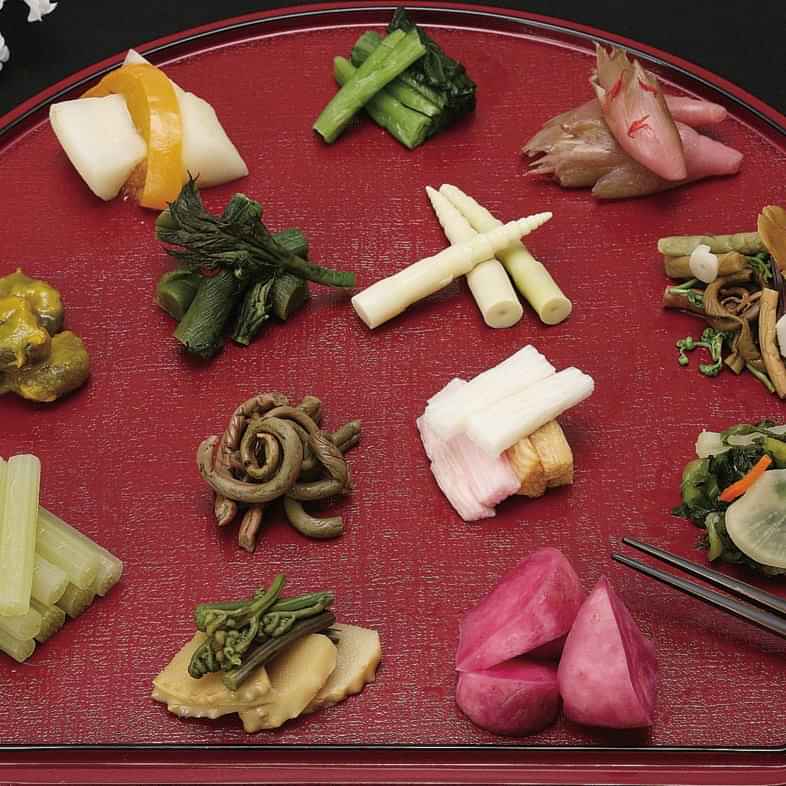
Tsukemono
漬物
Walking inside Nishiki-ichiba Market you'll surely ask yourself "what are these strange foods?". Since ancient times, Kyōto is famous for its pickels, widely used in Buddhist shōjin-ryōri vegetarian cuisine.
Every kind of vegetables are preserved using simple ingredients like salt, rice bran, miso and vinegar, locking flavors for days or even months.
Inside Kyōto's Nishiki-ichiba Market you can find any type of pickles and most of the tsukemono shops do offer free tastings, give it a try if you're there.
Pic © Tsukemono
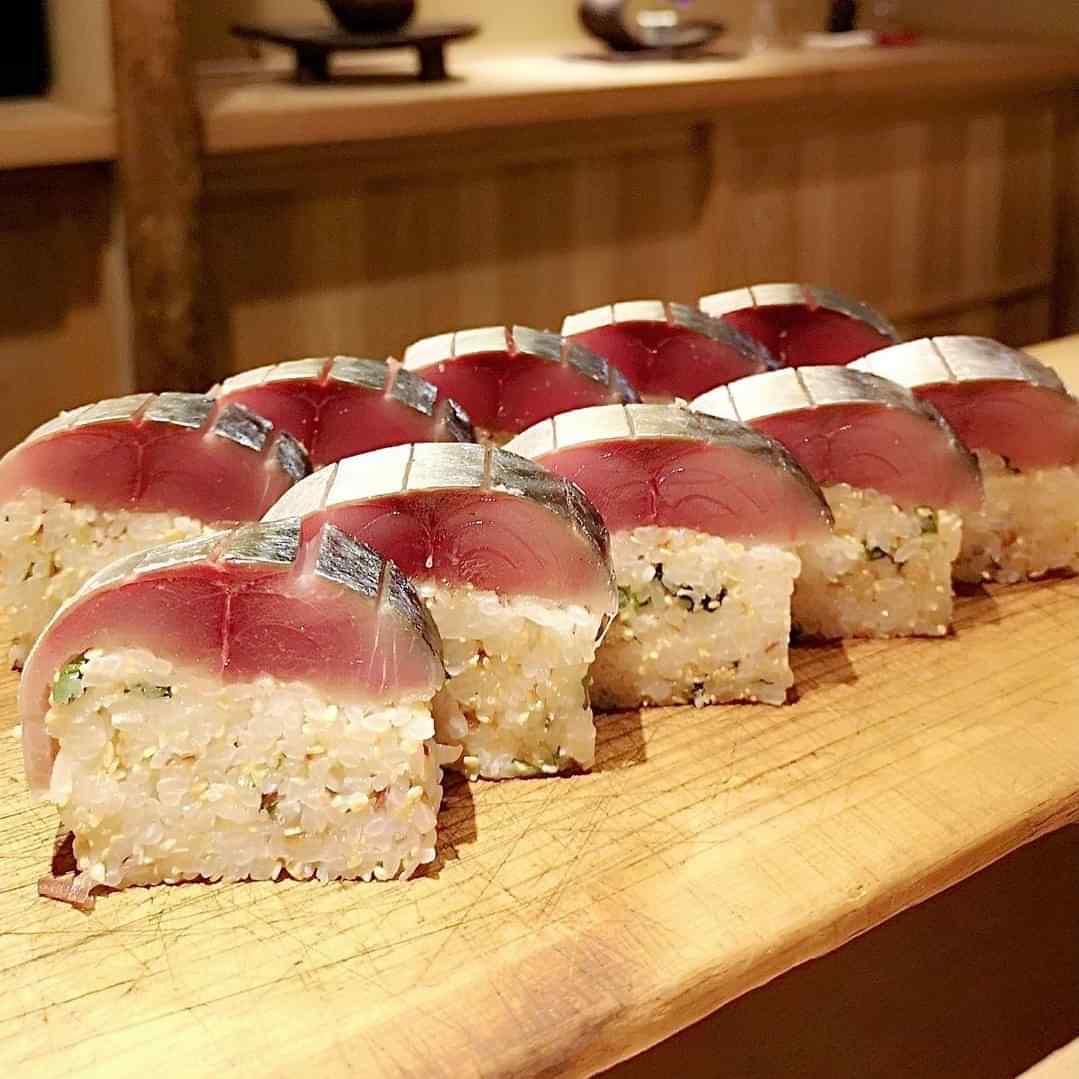
Saba-zushi
鯖寿司
Since Kyōto is far from the sea, in the city you can also find pickled fish, a great way to preserve it: this is how one of the greatest sushi dishes of all time was born, the saba-zushi (mackerel sushi).
This pressed sushi consists of rice topped with marinated mackerel fillet, sometime covered with a thin layer of kelp.
Unlike other pressed sushi varieties, saba-zushi isn't pressed with the traditional wooden appliances but it is wrapped inside bamboo leaves in order to achieve its distinctive form.
Pic © kaepi_yummy
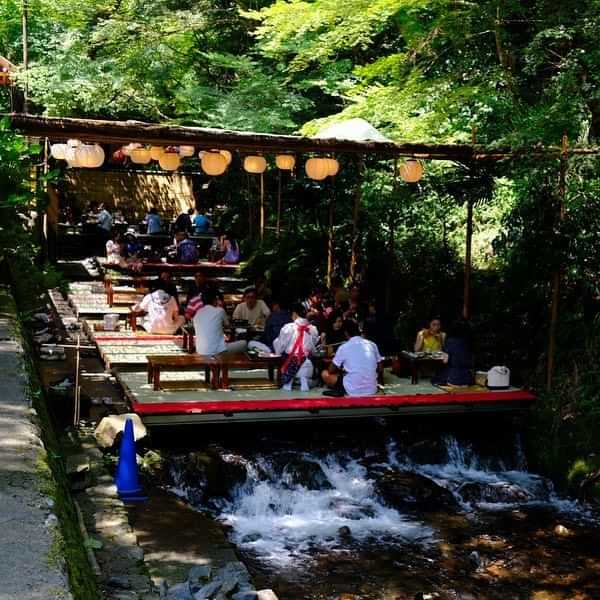
Kawadoko
川床
This is not a food to try, but a unique way to enjoy it: kawadoko means "river floor", and in fact you're going to eat on platforms suspended over the river bed.
This experience is typical of summer time and very common on north of Kyōto, along Kibune-gawa River. Try to reserve your seat before heading there because the number of seats are very limited.
This food experience is a little pricy, one of the most famous restaurants is Kibune Kiraku, but walking south you'll find more of them.
Pic © yoko_0329

Kyō-gashi
京菓子
Kyōto is famous for Gion's tea houses and premium matcha green tea, and this sweets-jewel are a real art form that pairs perfectly with them.
If you attend to a tea ceremony, before receiving your cup of green tea the weitress will serve you these confectionery masterpieces with incredible shapes and colors.
Pic © kyomi_travel
Kyōto local souvenirs
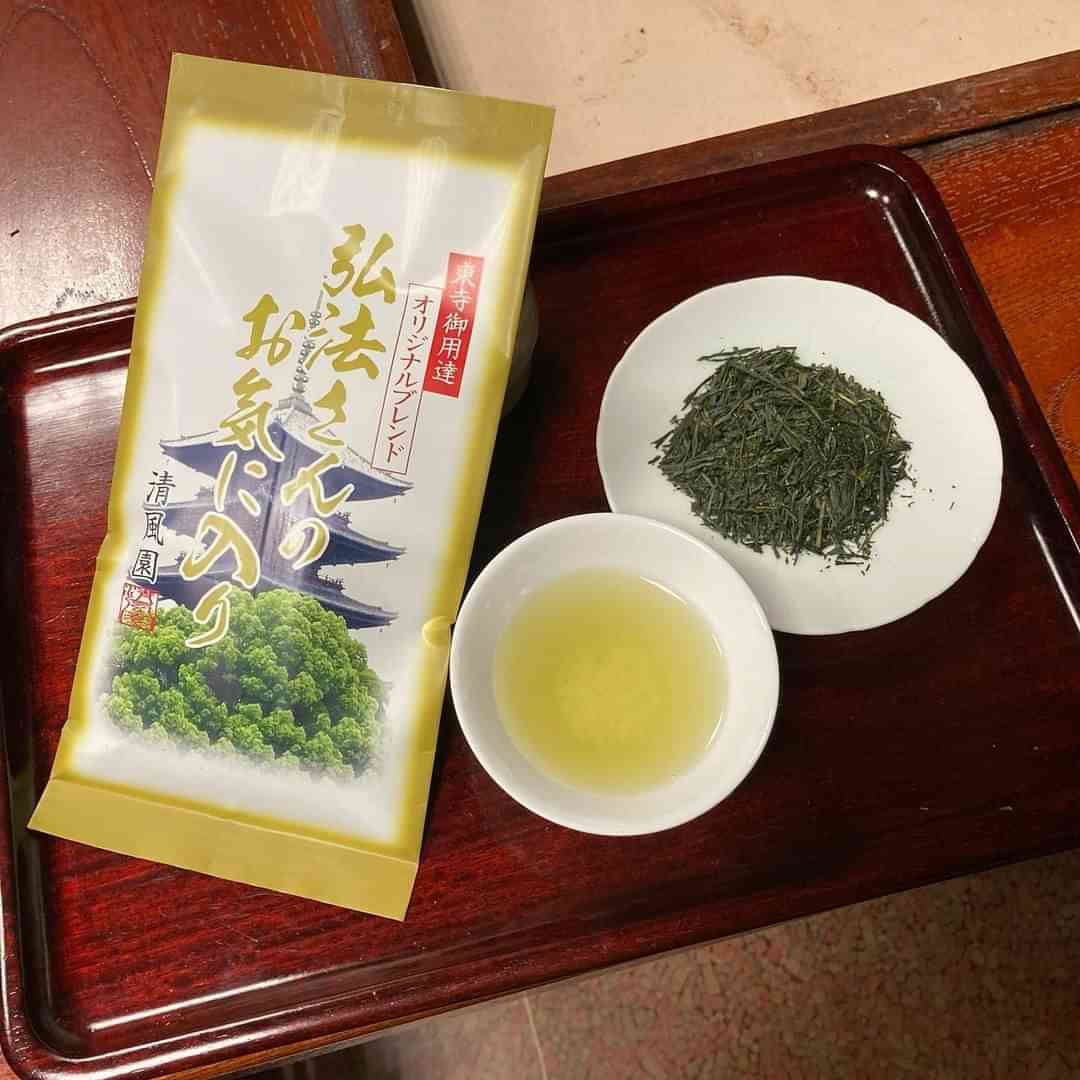
Uji-cha
宇治茶
Uji-cha is the name of all types of green tea produced in the Uji area, a region full of high quality green tea fields.
The most common types of Uji tea are matcha, the green tea powder used in tea ceremonies, gyokuro, grown under the shade rather than full sun, and sencha, the most common tea.
In the Wazuka area there are a lot of tea plantations, so you might want to visit the nearby farms on your next travel to Japan!
Pic © ozawaseifuuen
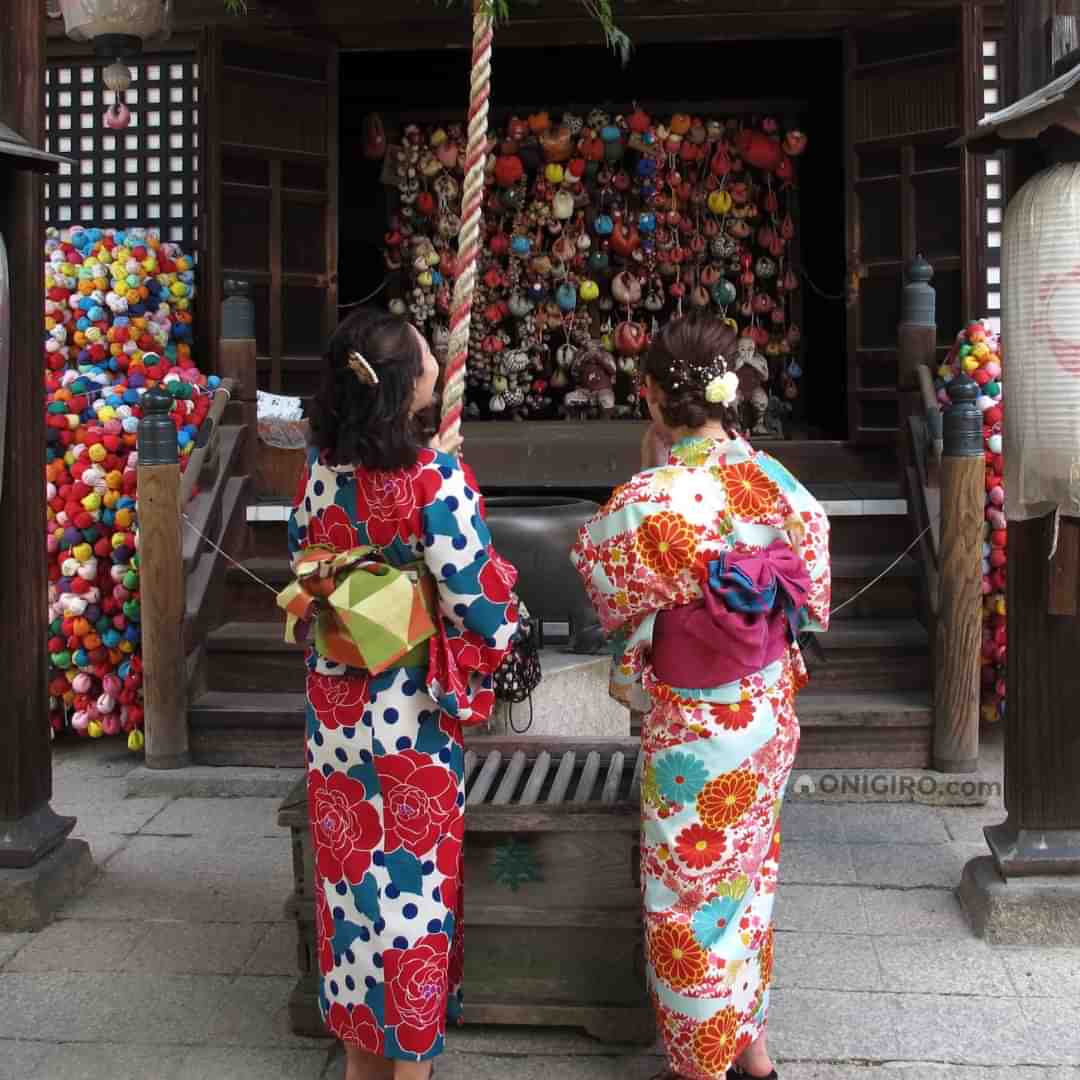
Yukata
浴衣
The yukata is a casual summer kimono, the favorite Japanese garment to wear during the summer festivals. These clothes have colorful and unique patterns, made primarely with cotton to enhance transpirancy and escape the summer heat.
The area around Kiyomizu-dera Temple is full of rental kimono stores where you can buy your own yukata as souvenir or rent it for the day.
Pic © onigiro.com
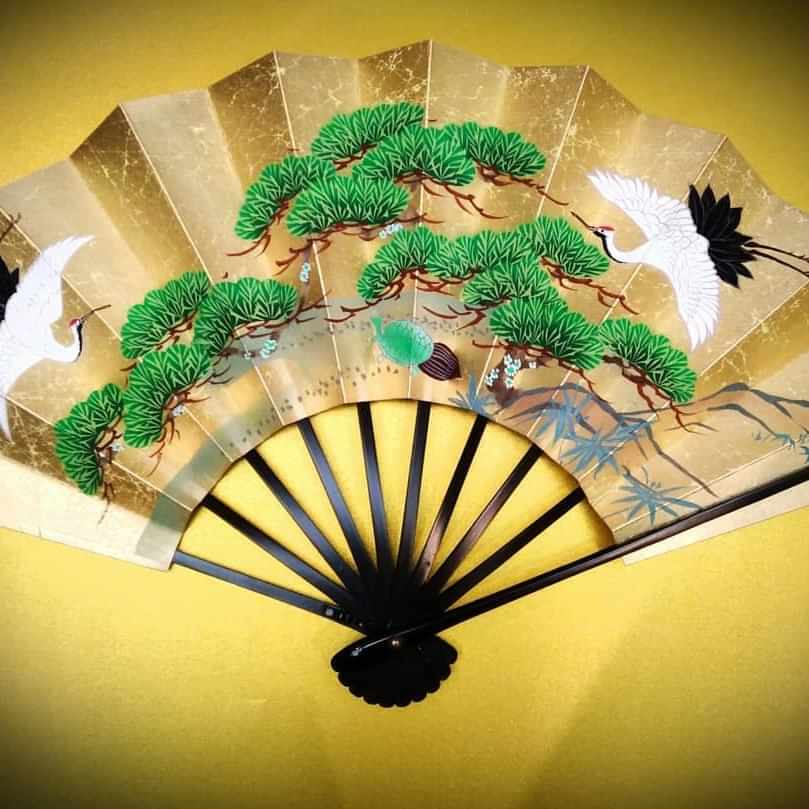
Kyō-sensu
京扇子
Sensu are folding fans. Those created in Kyōto are particularly renowned due to their quality, so as to obtain the name of Kyō-sensu.
They are very high quality art works, decorated with silver leaves or gold lacquer. The type of bamboo used is light and flexible, which makes it ideal for the fan ribs.
Again, the area of Kiyomizu-dera Temple has many souvenir shops that sell fans for any budget, from 20 $ to 150 $ each.
Pic © onishikyosendo_maisen
Kyōto prefecture nearby destinations
Cities
- Himeji, the city of the “white egret castle” that has never been destroyed;
- Kōbe, the city worldwide known for its premium quality beef;
- Ōsaka, the second city of Japan with many leisure attractions, events and a beautiful castle;
- Nagoya, a big city on Aichi prefecture, with events all-year-round;
- Nara, a small city south of Kyōto, famous for its park full of deer and temples;
- Ise, home of the most important shrine of Japan.
Towns & more
- Kinosaki Onsen, a marvelous hot spring town where you can wander through the streets wearing a yukata;
- Shirahama, one of the most beautiful beach of Japan with white sand and clear water;
- Kōya-san, the center of Shingon Buddhism, a mystical experience inside nature;
- Hikone, with its “water castle” facing the largest lake of Japan, Lake Biwa-ko.
Kyōto city transportation guide
Access to Kyōto
By trains, Kyōto station is a central hub for Japan, with departures every minute. The fastest train line is JR Tōkaidō-San’yō Shinkansen line, a bullet train connecting the main Japanese cities. For more information on Japan railways, check our JR Pass and trains blog post.
By airplane, the closest airport is Kansai international airport, located on the artificial island in Ōsaka bay.
Moving within the city
Kyōto, as well as Tōkyō, is full of taxi that can be boarded everywhere. They are comfortable, with fares starting from 4 $, check this taxi fare calculator for more.
Also buses are comfortable, with a single ride costing 2 $ and daily tickets 6 $, really convenient for solo travelers exploring the city. Check the Kyōto bus website for more.
At Kyōto central station, all city bus lines can be boarded on station’s north exit while tens of taxis are waiting at the south (Shinkansen) exit.
Bike rentals
There is a small bike share system, covering the area between Kyōto station to Kamo-gawa River, called Community Cycle.
Also, many private bike rental shops are spread around the city, here’s some of them:
- Kyōto Eco Trip, with different shops, the main one is located on south of Kyōto station;
- J-Cycle, a small shop north of Kyōto station;
- Kyōto Cycling Tour Project, close to the central station, that offers simple rental bike service as well as guided bike tours;
- Raku-Chari, has 2 shops where you can rent and return bikes, one at Higashiyama and another at Shichi-jō;
- Kyōto rent a bike, another small shop south of central station.
From Tōkyō to Kyōto
By airplane, it takes a 1,5h flight to Kansai International airport, costing about 70 $. Then, you’ll need to take a train to reach Kyōto station, with another 1,5 h and about 20 $. So, if you also consider flight check-in time, the total time of the connection grows to 5 hours and about 90 $.
By train, take JR Tōkaidō-San’yō Shinkansen line from Tōkyō to Kyōto, a connection that takes 2,5 hours and costs about 120 $ without a JR Pass.
Kyōto 2 days itinerary
To visit the entire city, you’ll probably need 5 days, but if it’s your first time in Kyōto, 2 days are sufficient to see the most famous attractions. In the following, our 2 days itinerary will bring you through these places, assuming that you’re already in Kyōto on day 1.
Day 1 - Morning
- 8:30 – 10:30 visit the 1001 Kannon army at Sanjusangen-dō Temple, close to Kyōto central station;
- 10:30 – 11:00 go to Shichijō station and take the Keihan train line for 3 stops, exiting at Fushimi-Inari station;
- 11:00 – 13:00 visit the Fushimi Inari-taisha Shrine, a 5 km journey to the top of Mount Inari-yama through thousands of red torii;
- 13:00 – 14:00 get back to Fushimi-Inari train station and stop at one of the many nearby udon restaurants to try the kitsune udon, the “foxes’ favorite dish”;
- 14:00 – 15:00 take again the Keihan train line, but in the opposite direction to reach the Kiyomizu-Gojō station (4 stops) and move east to explore the nearby shopping streets;
Day 1 - Afternoon
- 15:00 – 17:00 visit the Kiyomizu-dera Temple, take panoramic pictures from the terrace and drink from one of the three waterfall streams downstairs;
- 17:00 – 17:30 move north with a taxi (or walk for 2 km) to reach Gion area;
- 17:30 – 19:00 visit Gion district, where lanterns are starting to light up after sunset, and make a short walk across Kamo-gawa river, Kyōto’s calm water flow;
- 19:00 – 21:00 make dinner at one of the many restaurant along the river, a really charming district called Ponto-chō.
Day 2 - Morning
- 8:30 – 10:30 visit Nijō-jō Castle, with exquisite gold decorations and wonderful surrounding gardens;
- 10:30 – 11:00 take a taxi or bus to reach the northern area of Kyōto;
- 11:00 – 12:30 visit the Kinkaku-ji Temple, the golden pagoda that reflects on the surrounding pond;
- 12:30 – 13:30 you can chose to have lunch now or after arriving at Arashiyama, where you feel more comfortable;
- 13:30 – 14:00 either take a taxi or head to Kitano Hakubaichō station to take the Randen trains and trams until Arashiyama station;
Day 2 - Afternoon
- 14:00 – 16:00 have a pleasant walk inside the greeneries of Arashiyama bamboo forest, a refreshing natural afternoon;
- 16:00 – 17:30 explore nearby area where is located the famous Tenryū-ji Temple and the Togetsu-kyō Bridge on Katsura-gawa River;
- 17:30 – 18:00 move back to Kyōto central station;
- 18:00 – 21:00 enjoy the led illumination of Kyōto station’s great staircase and have dinner at one of the many restaurants of the station’s malls.

